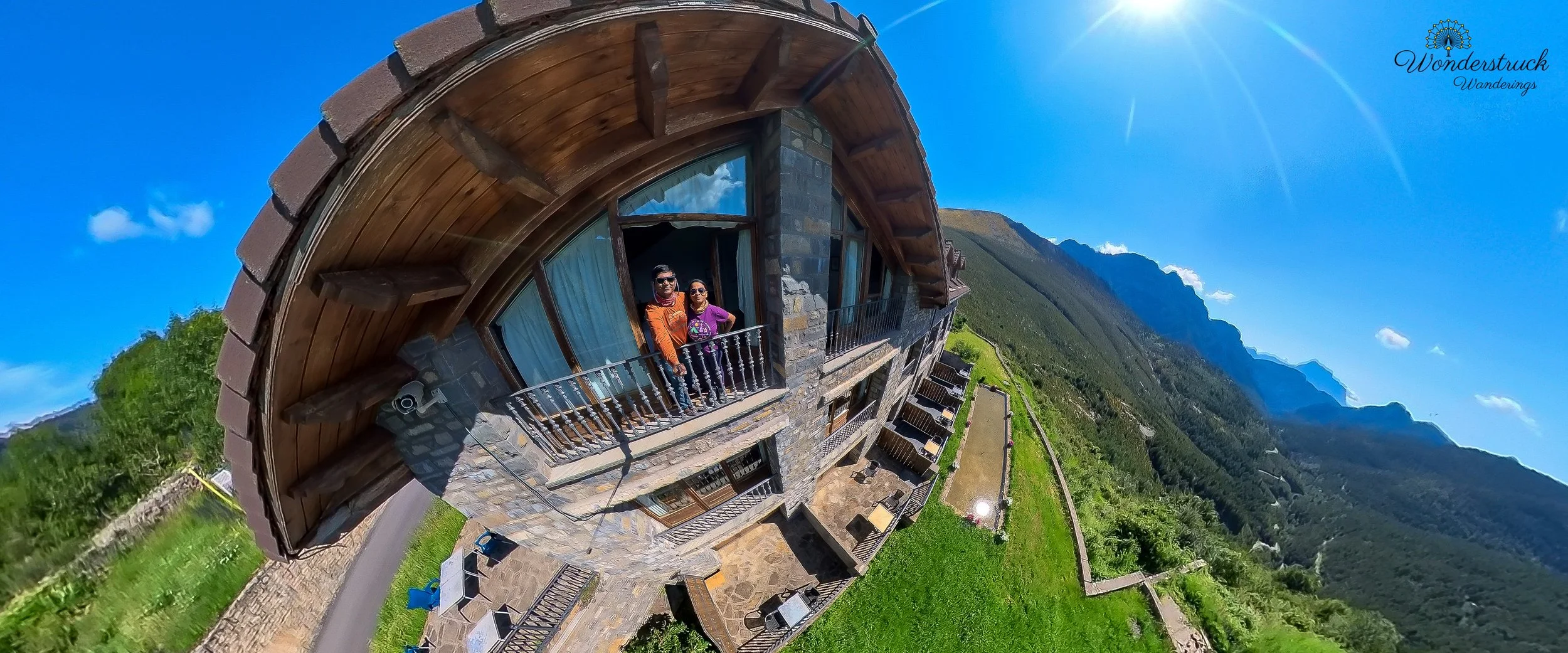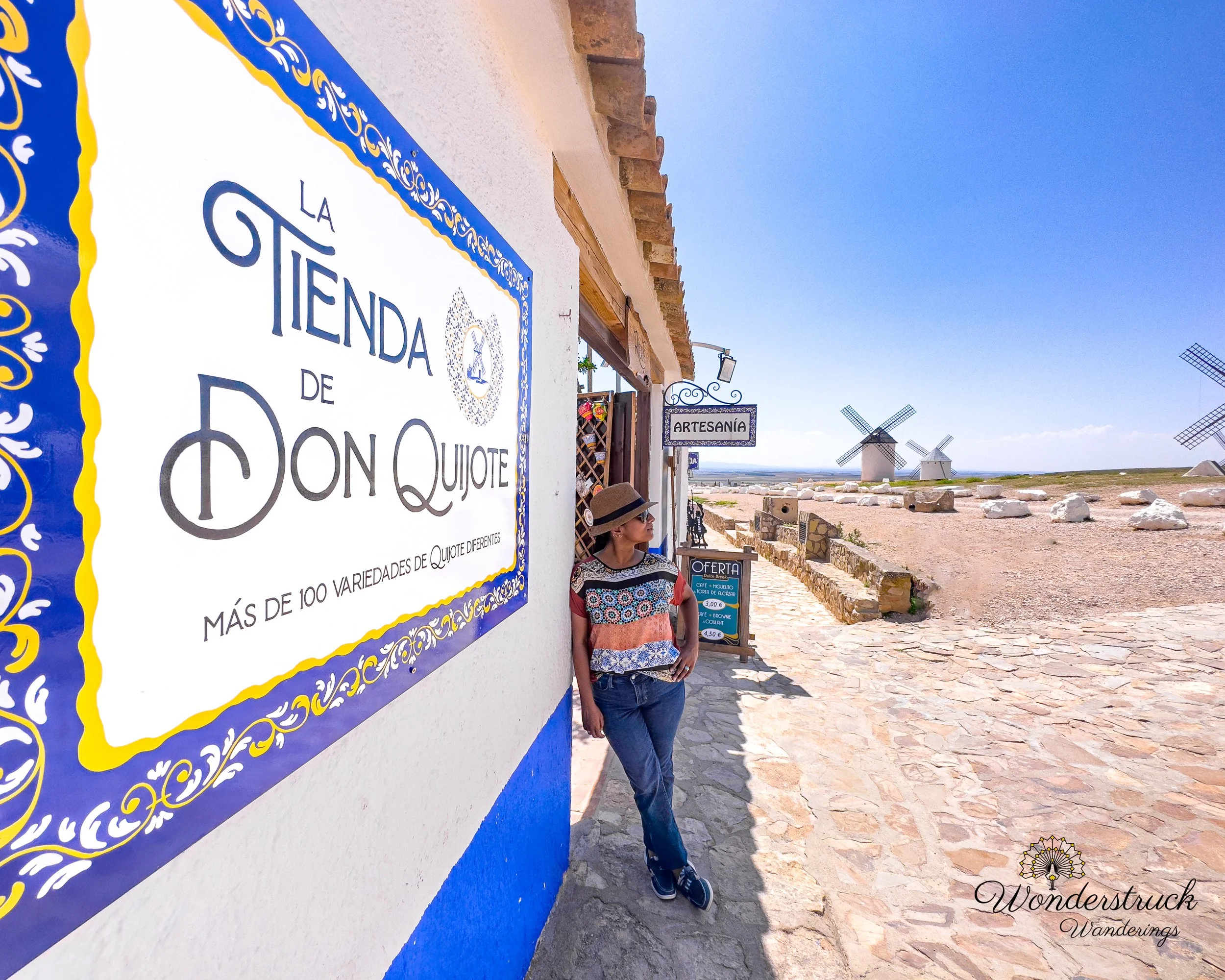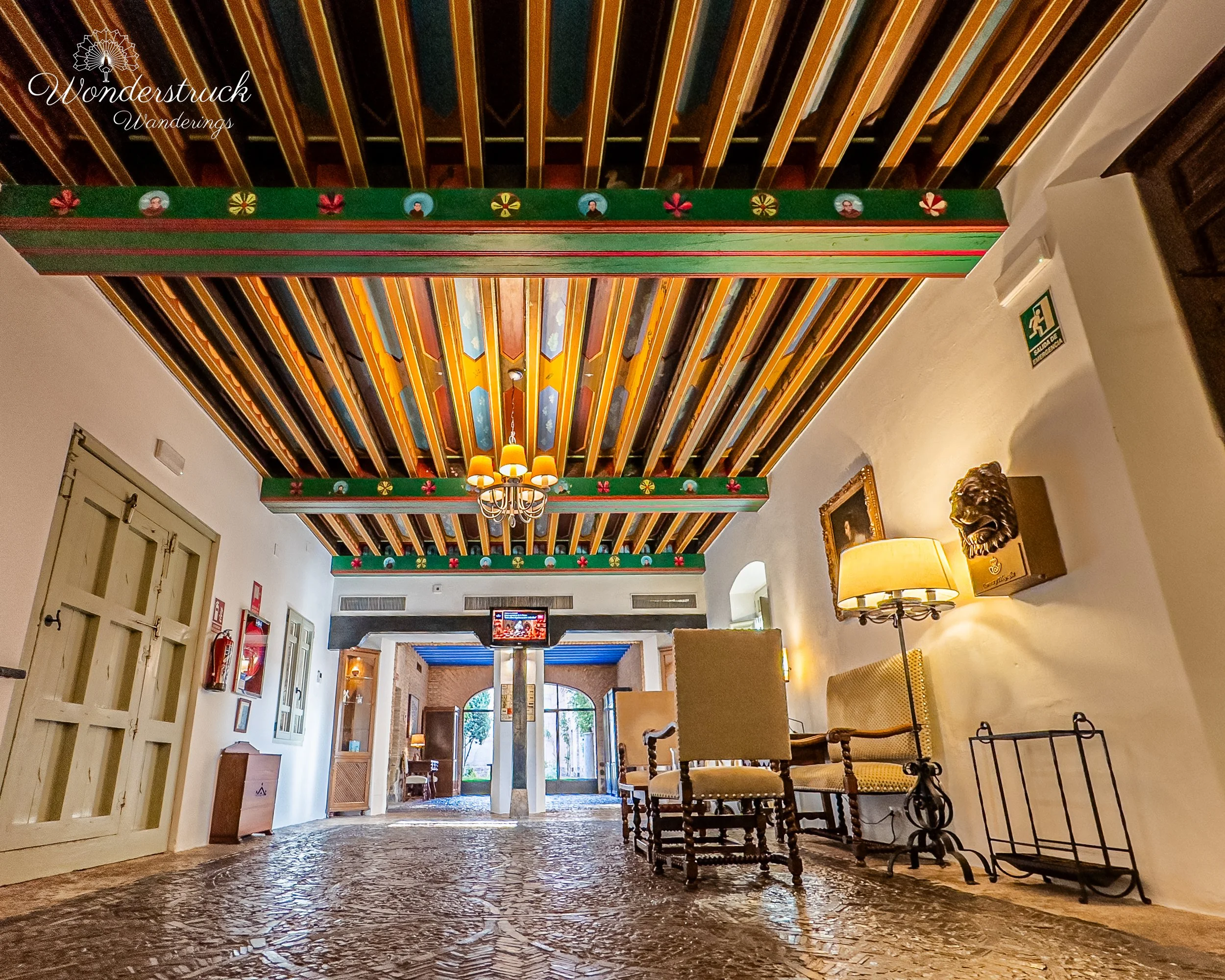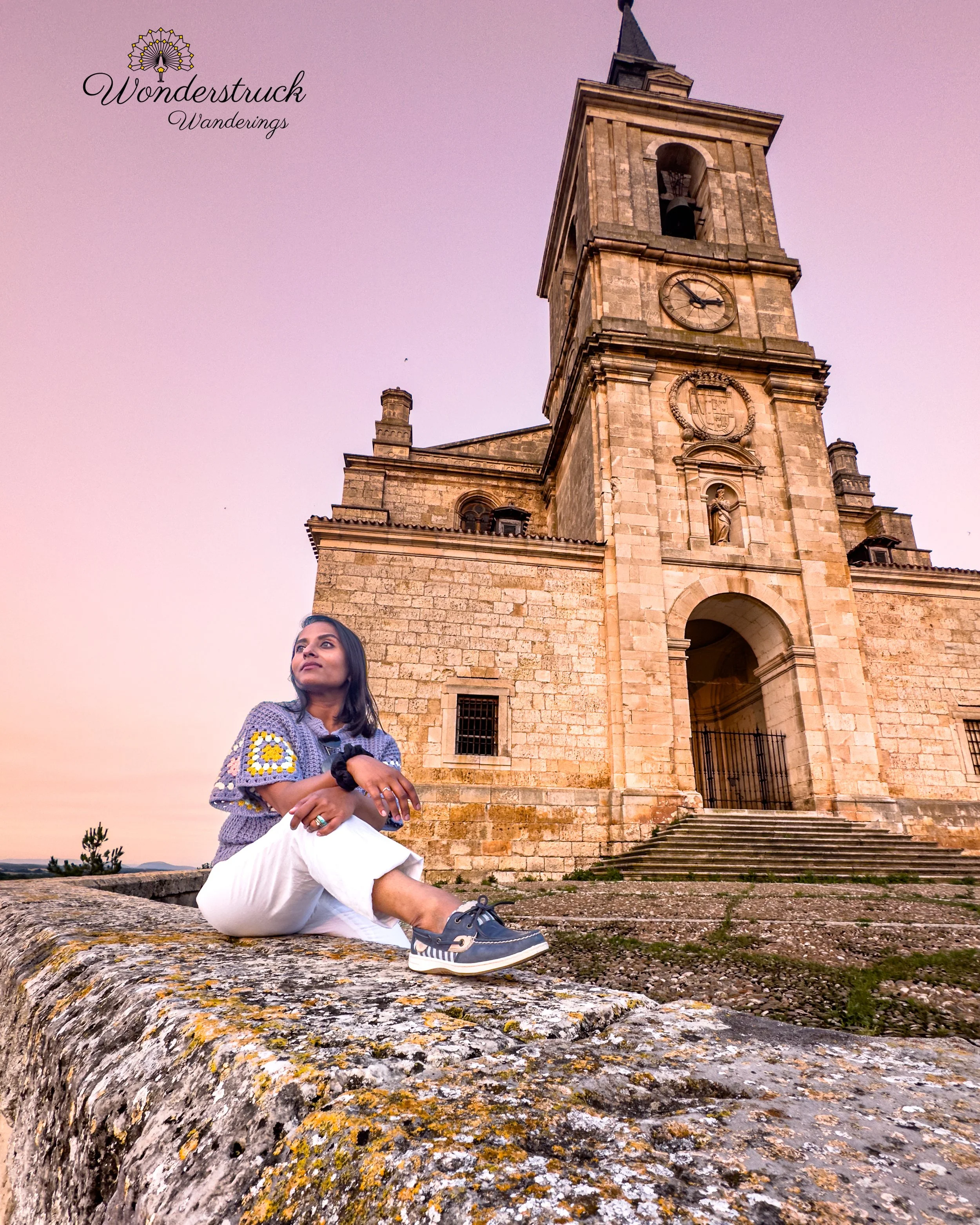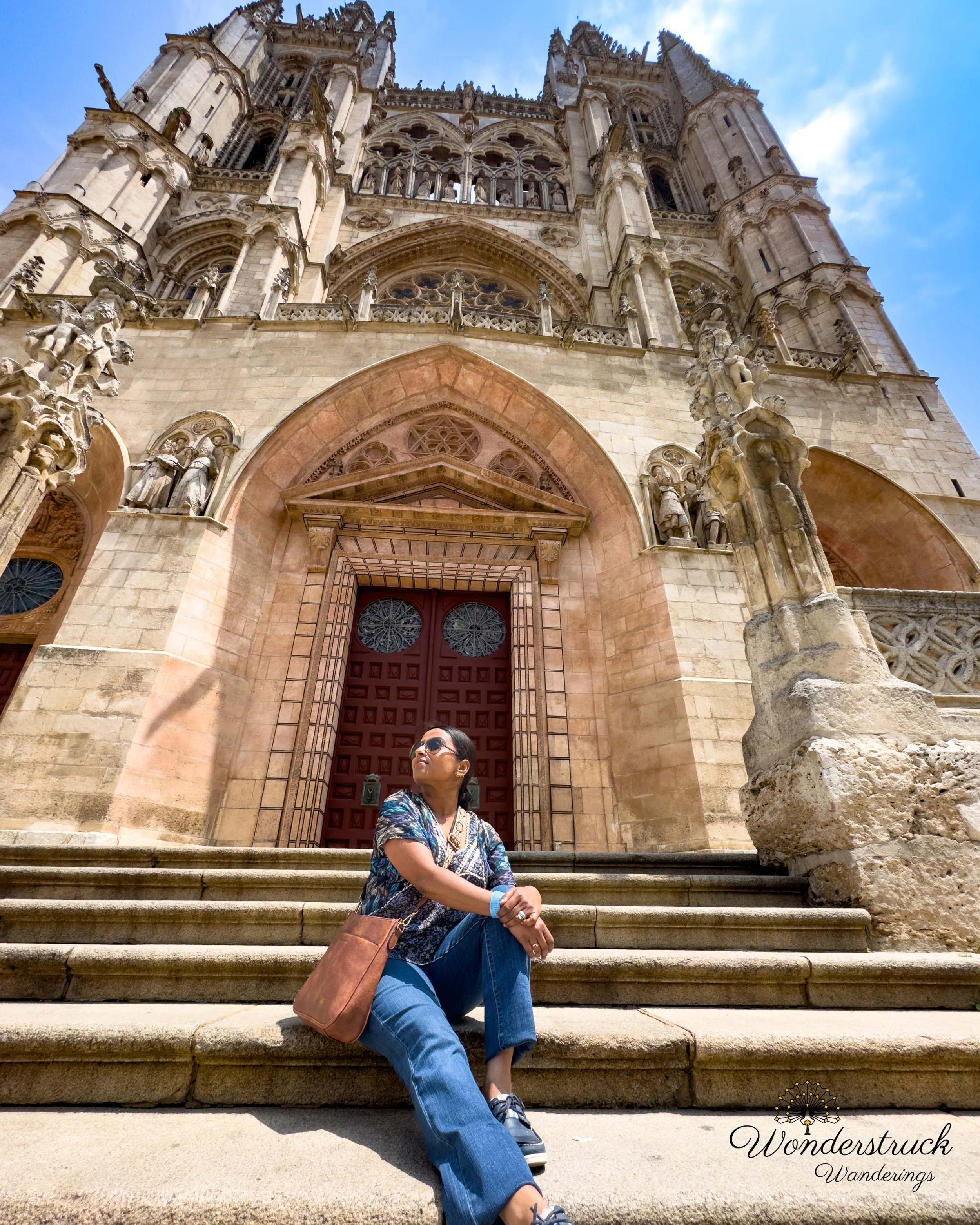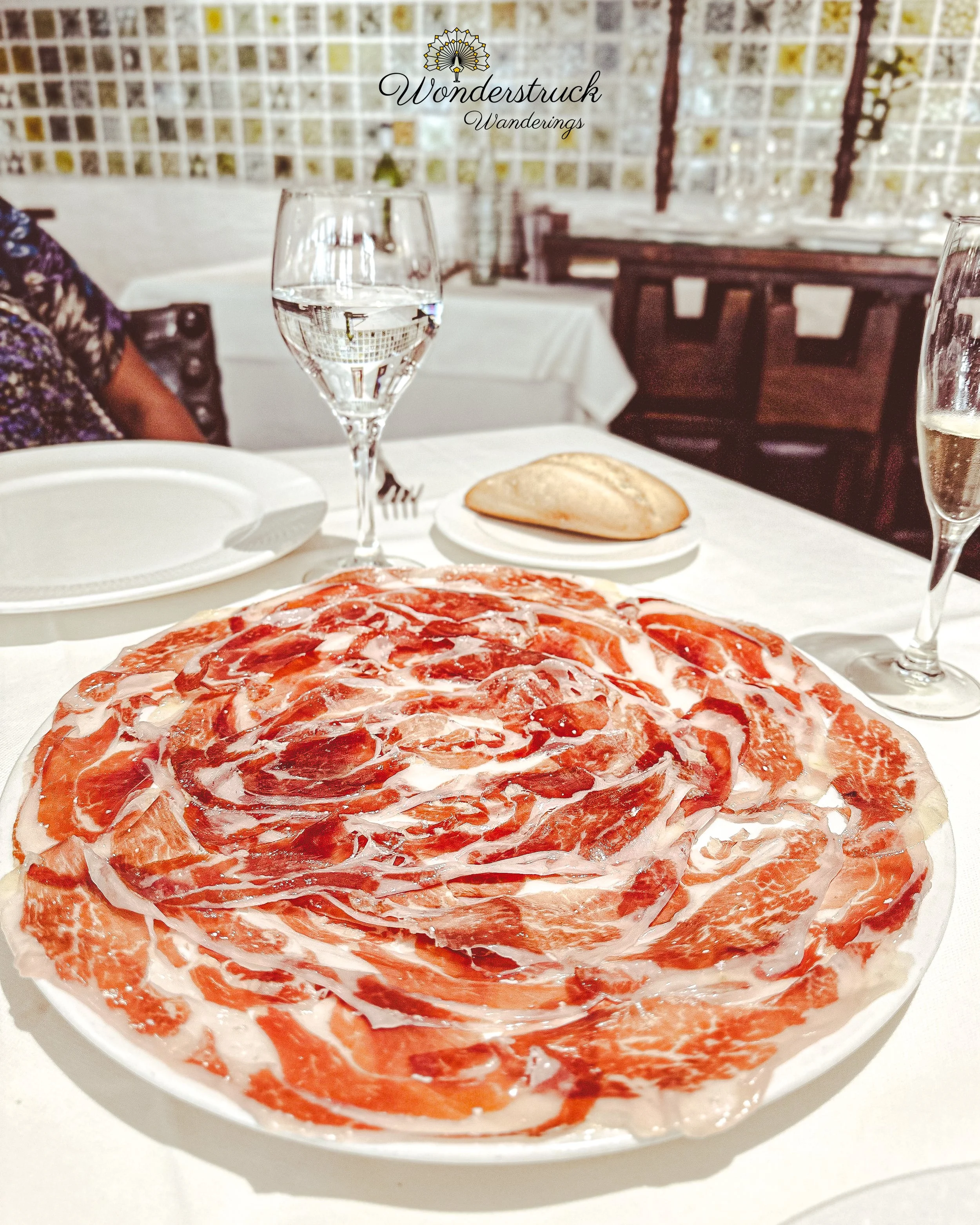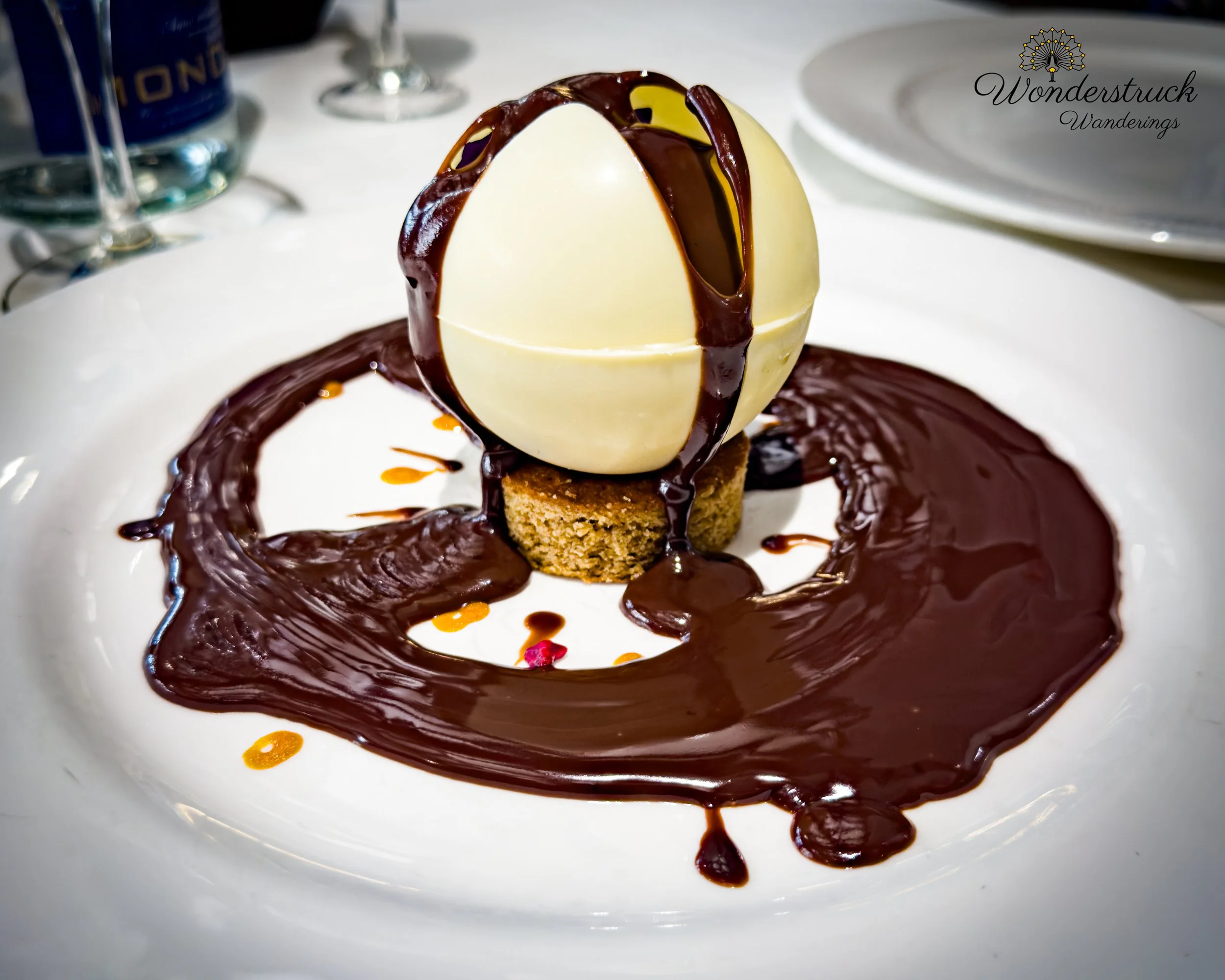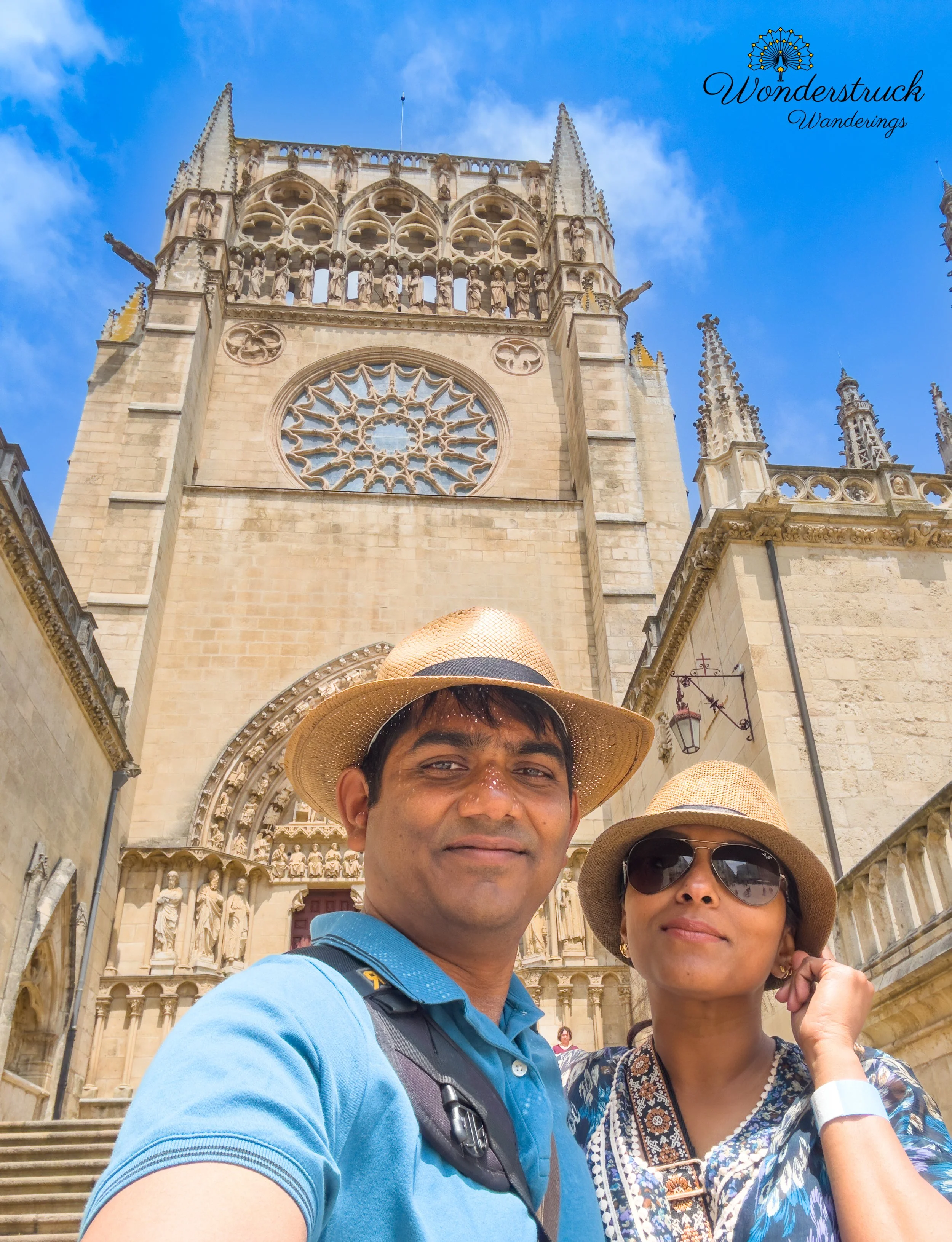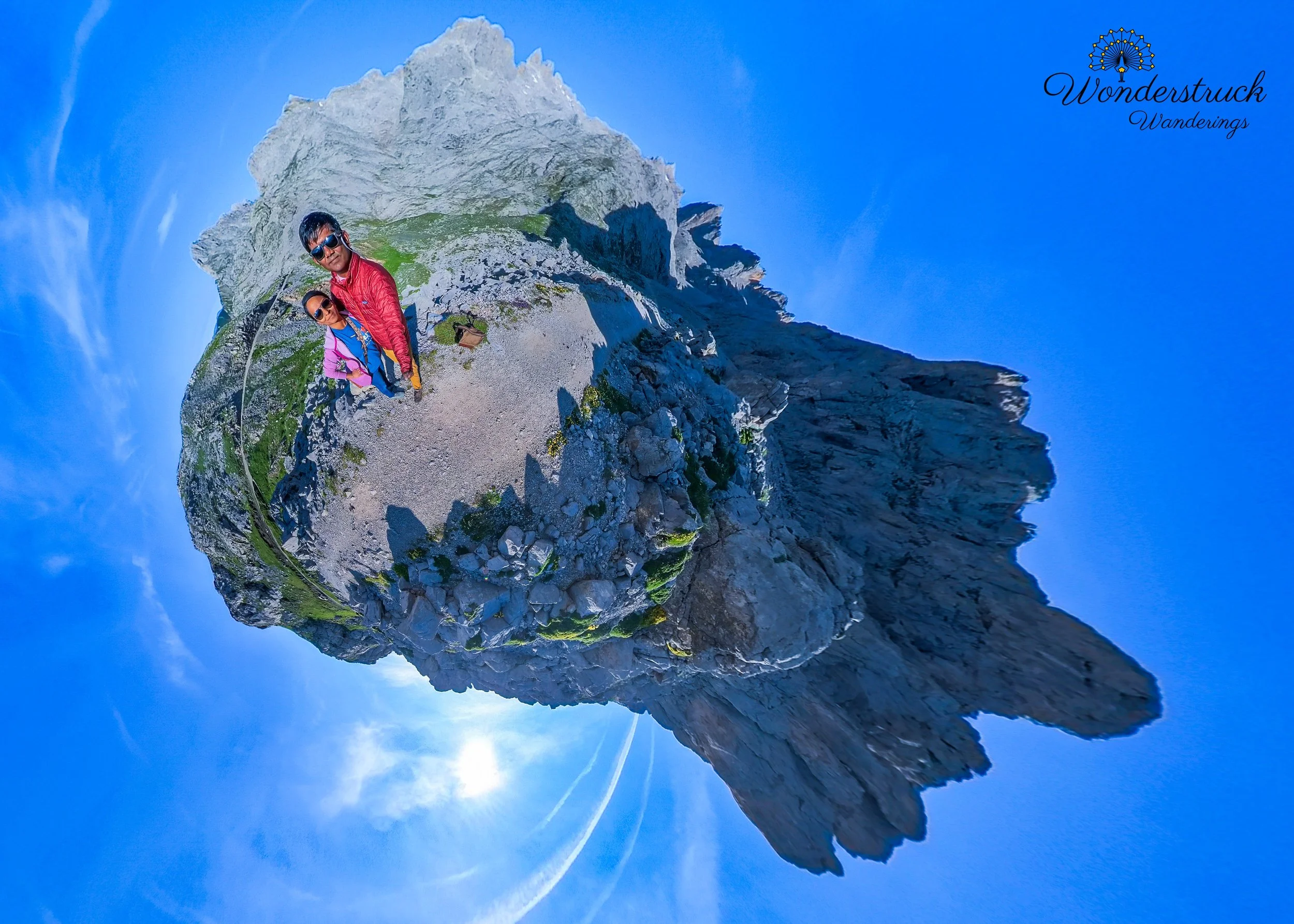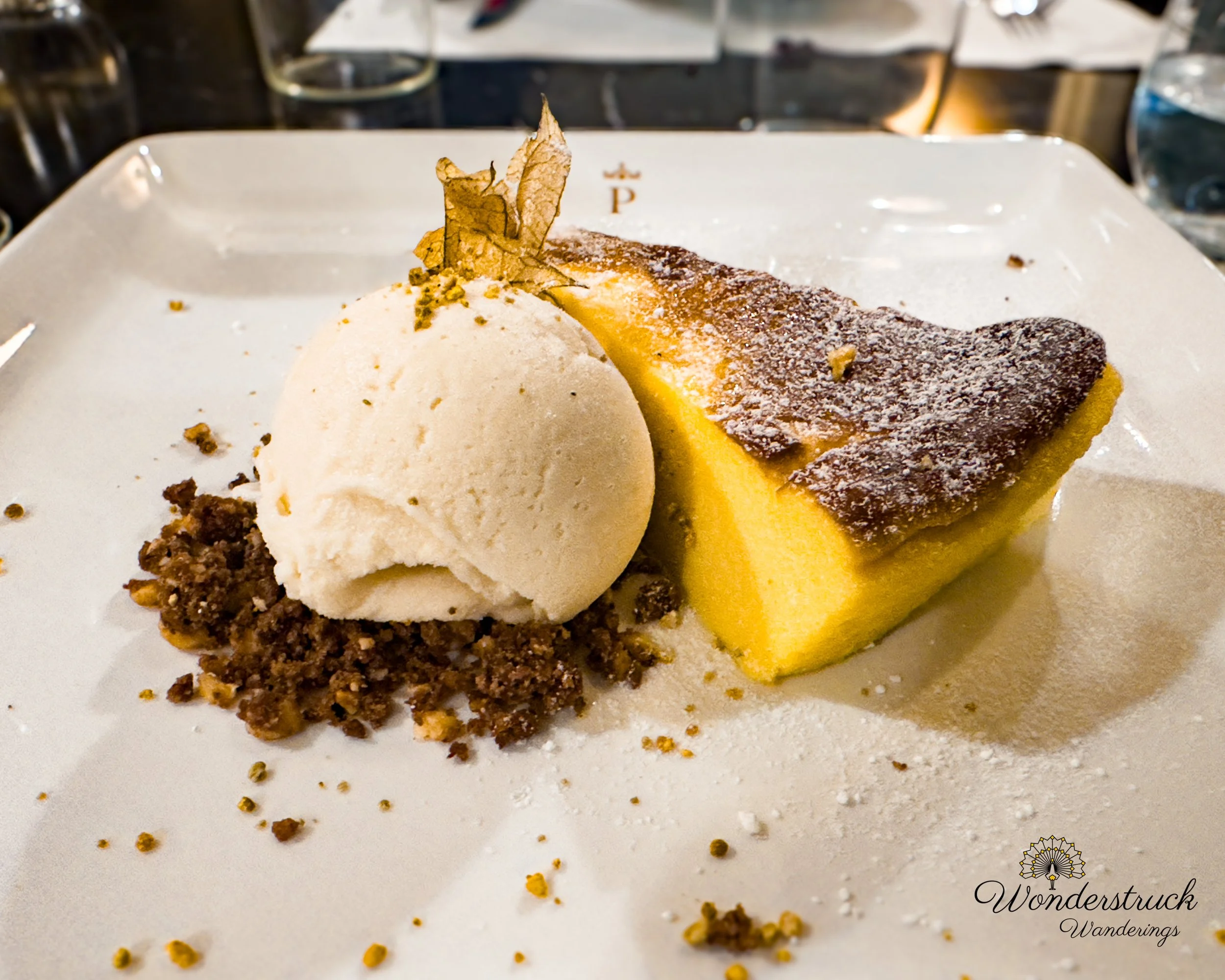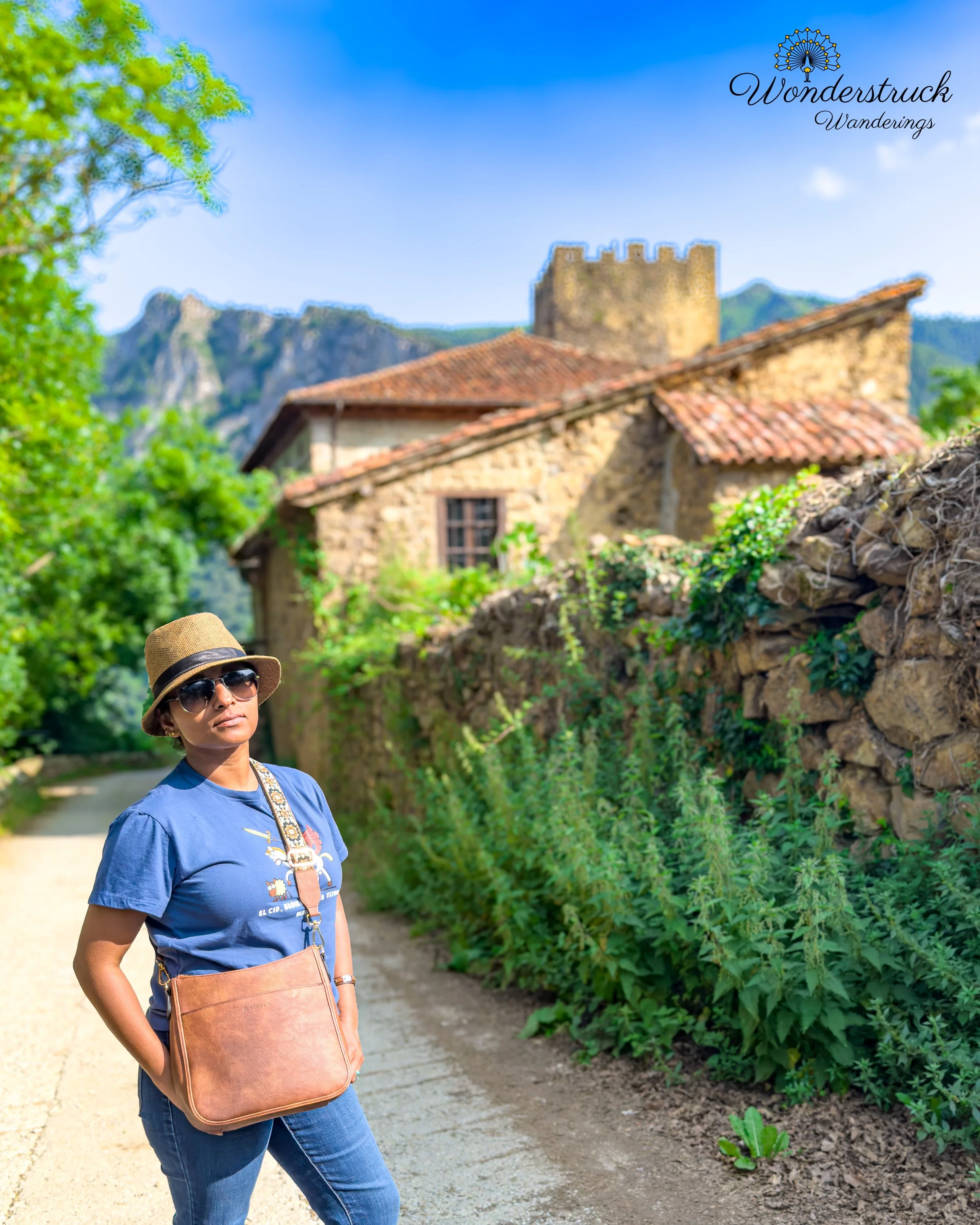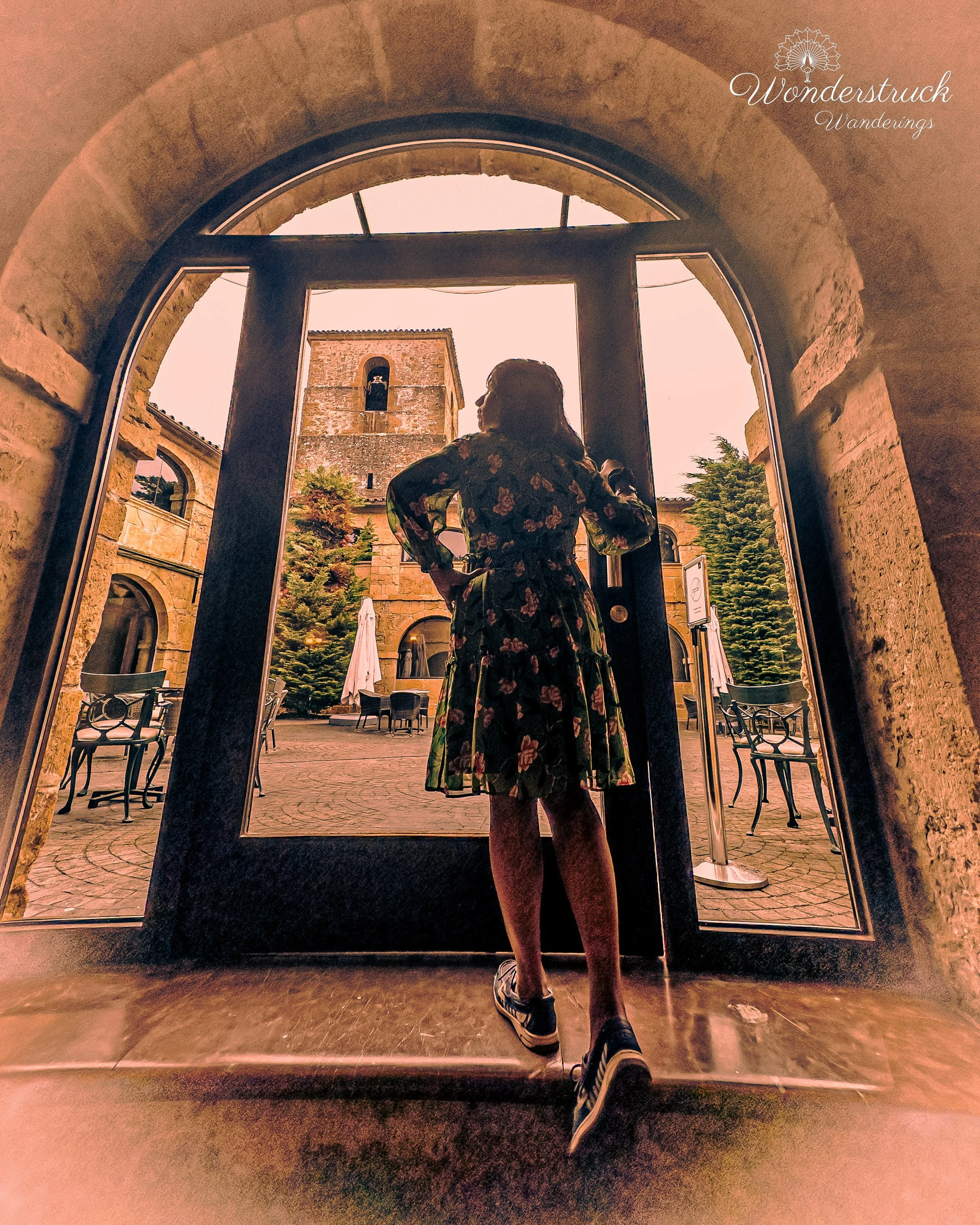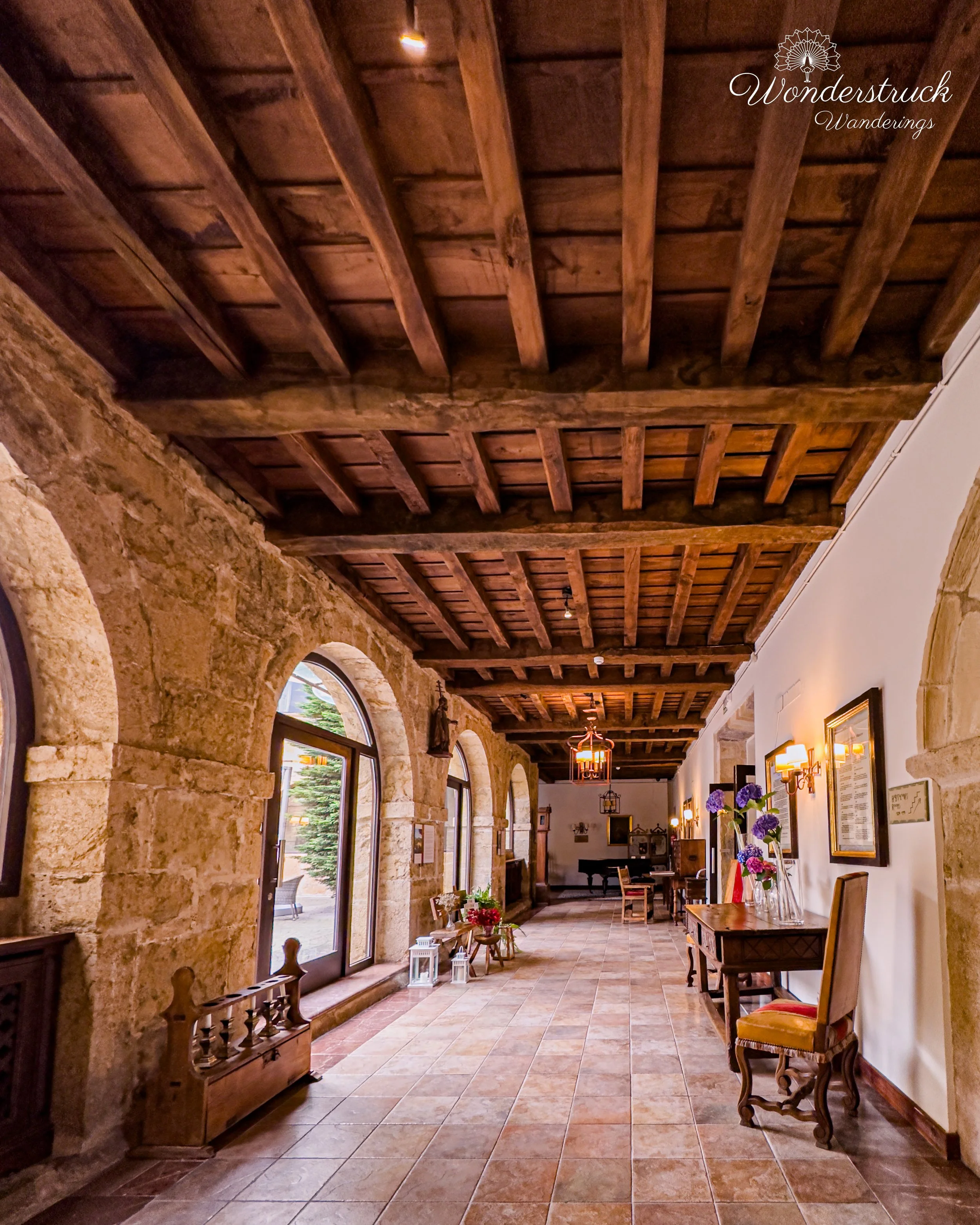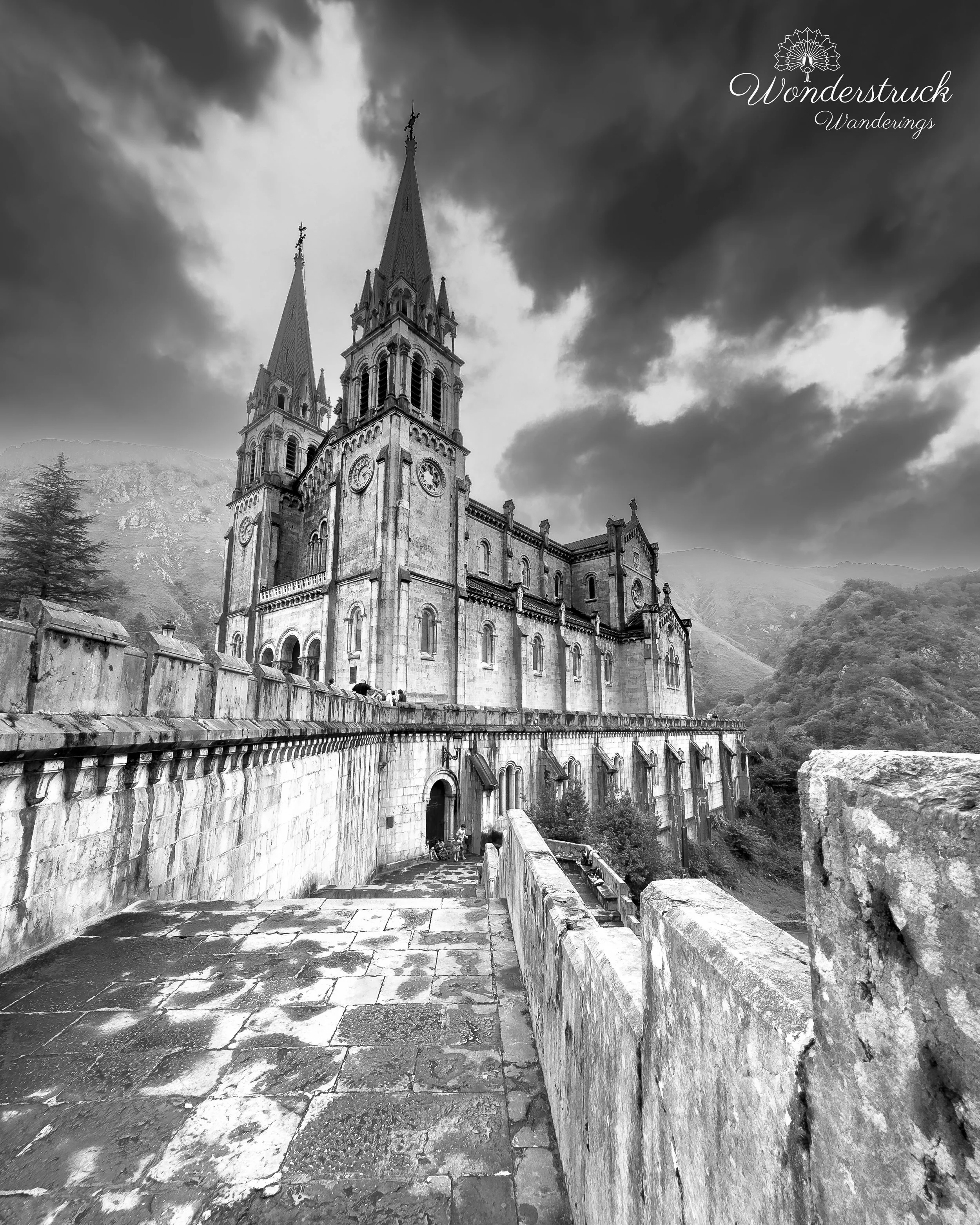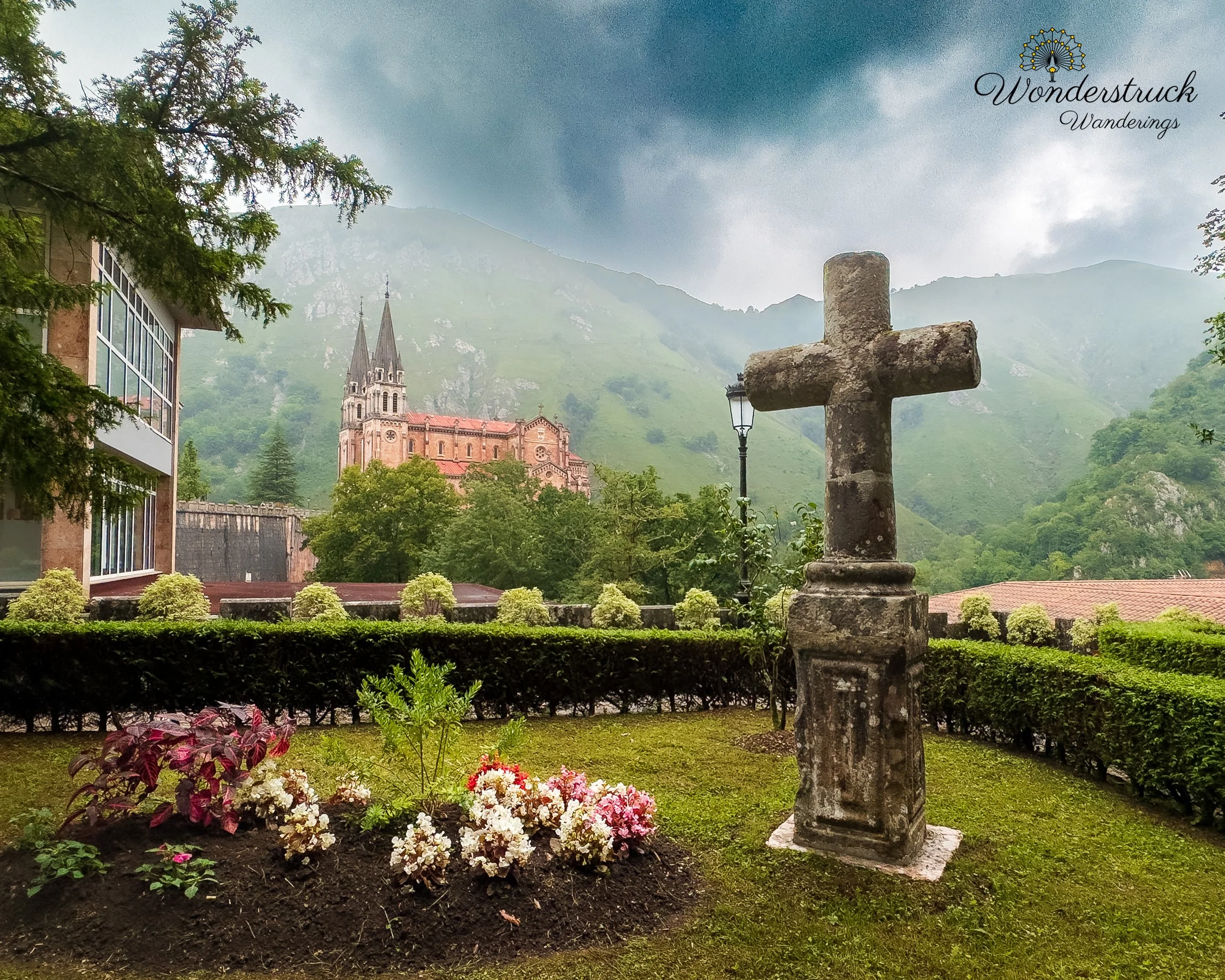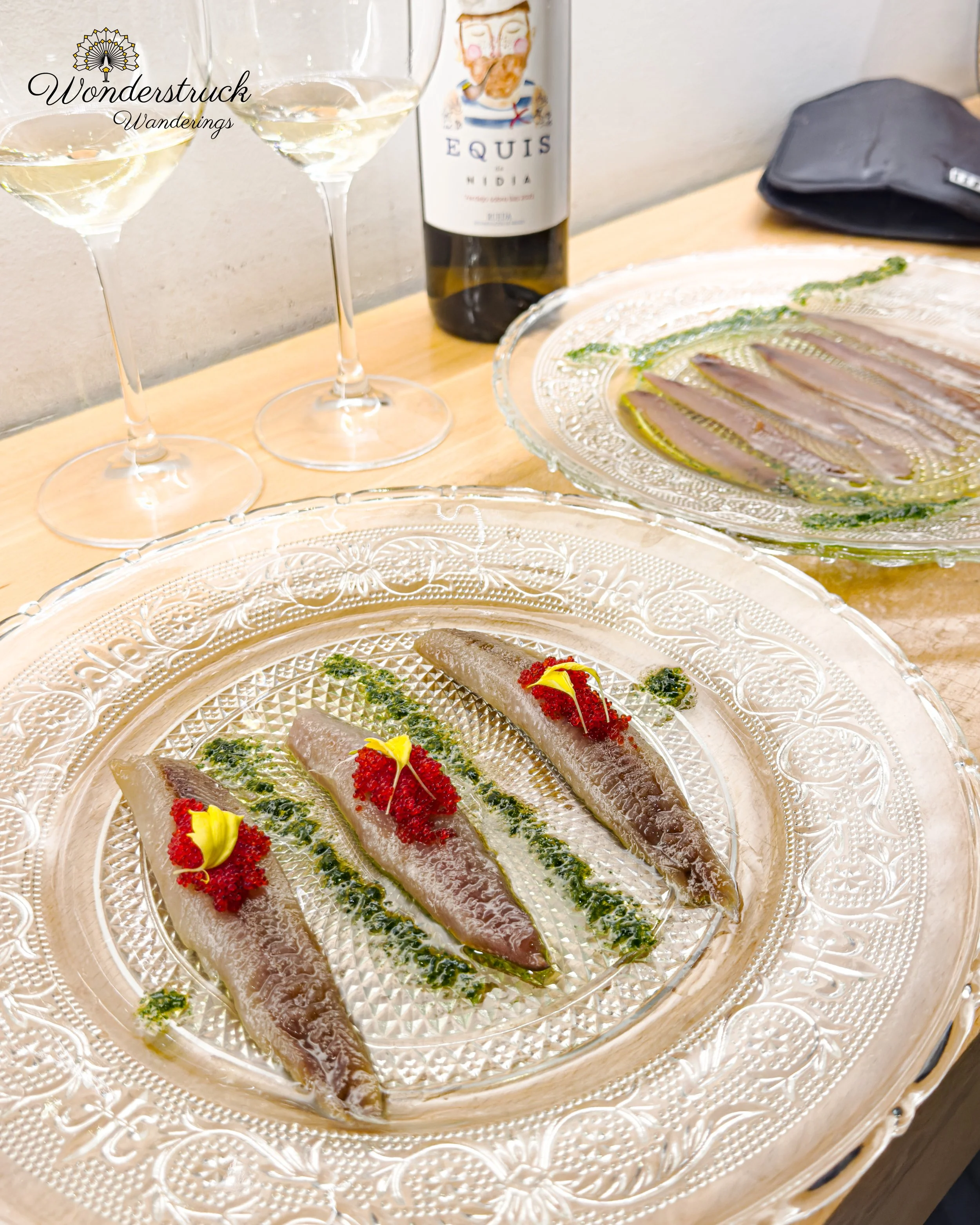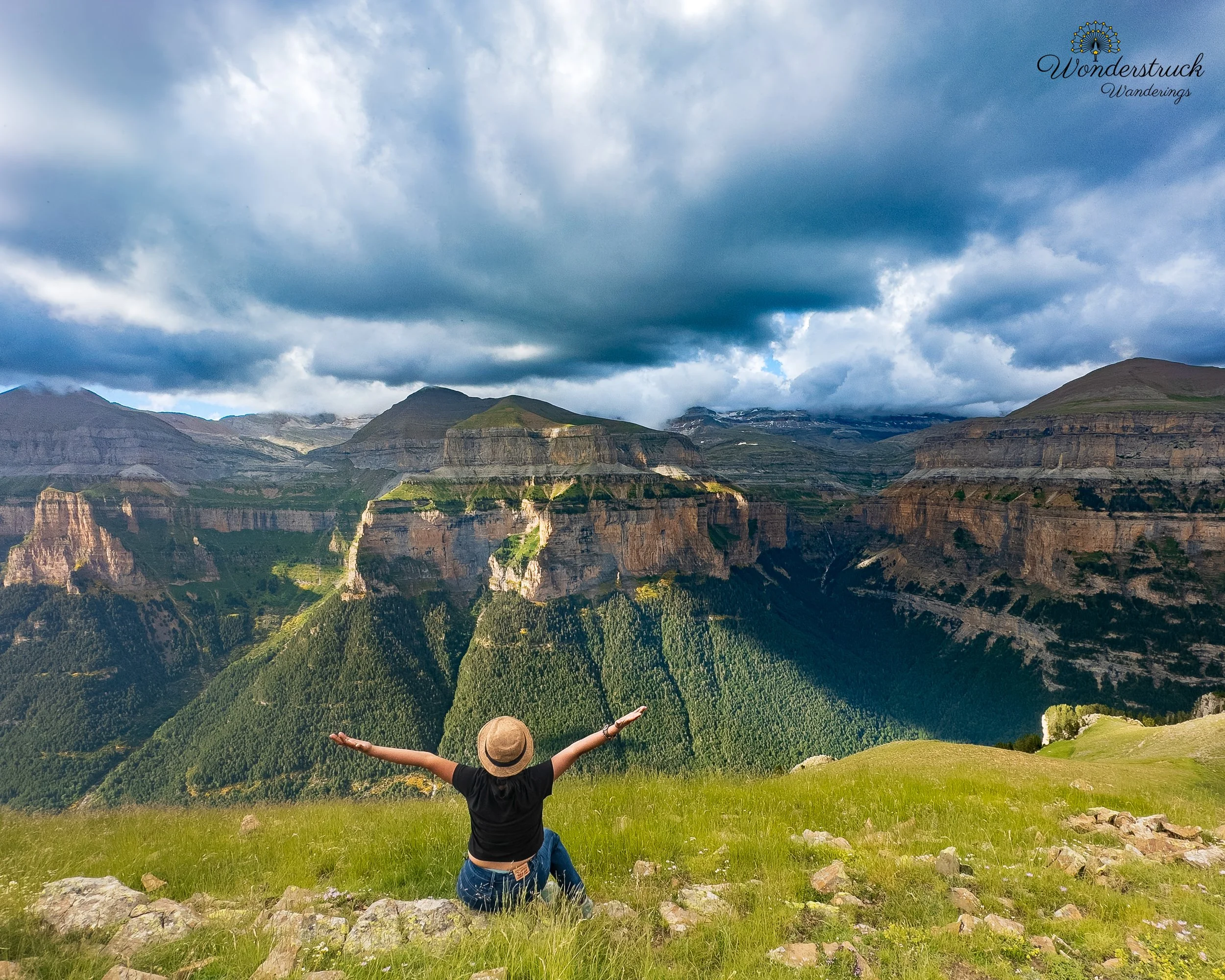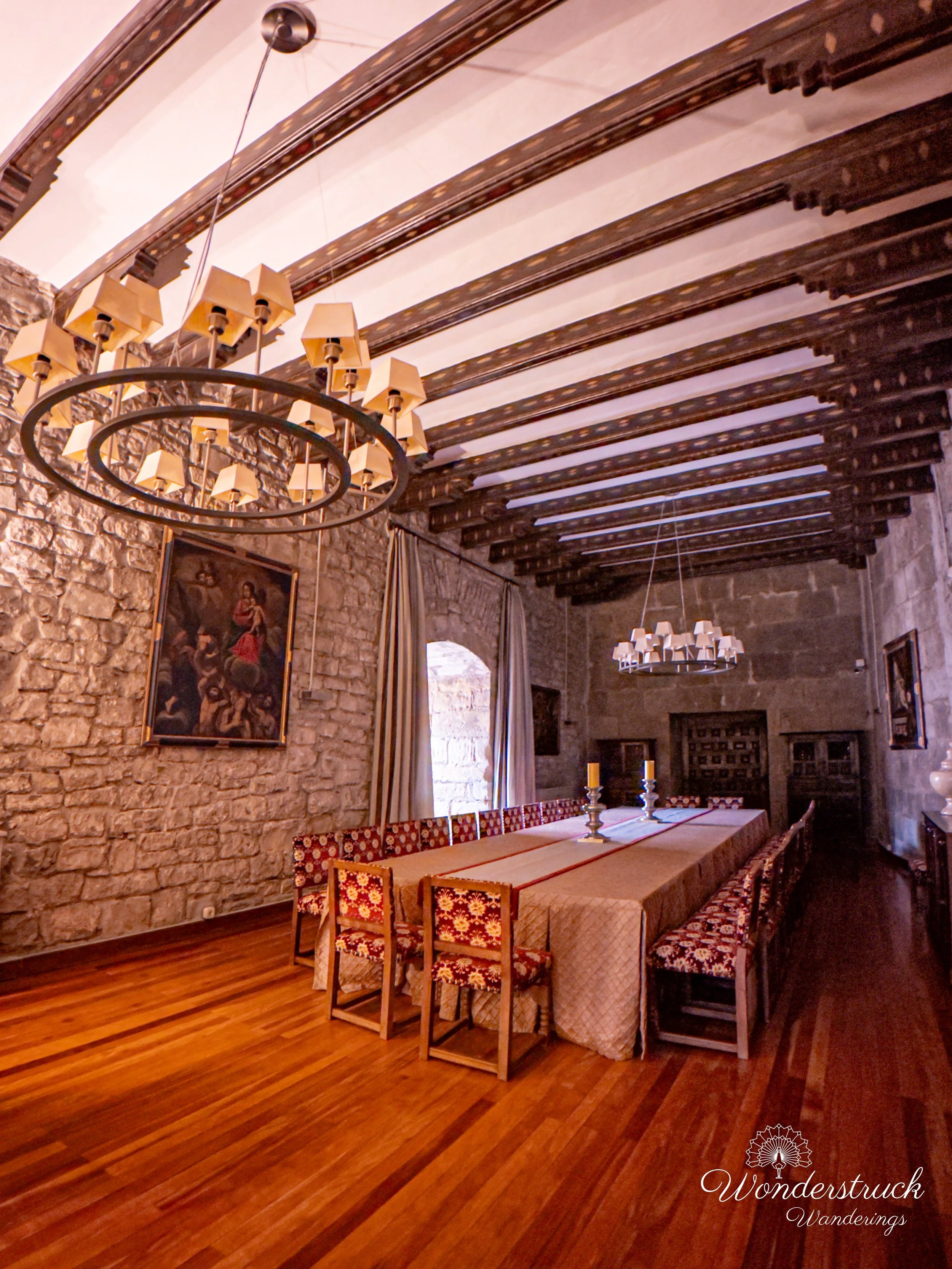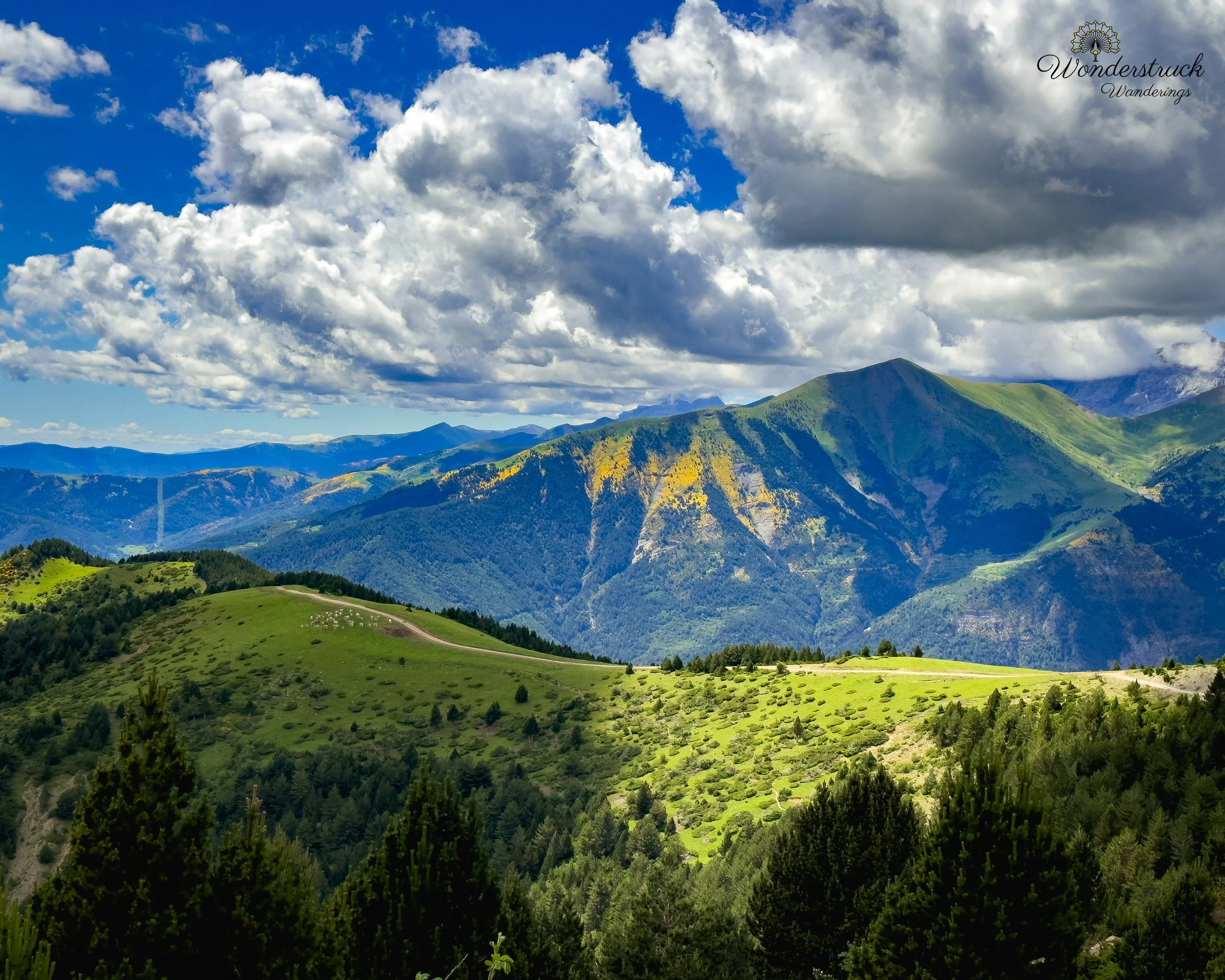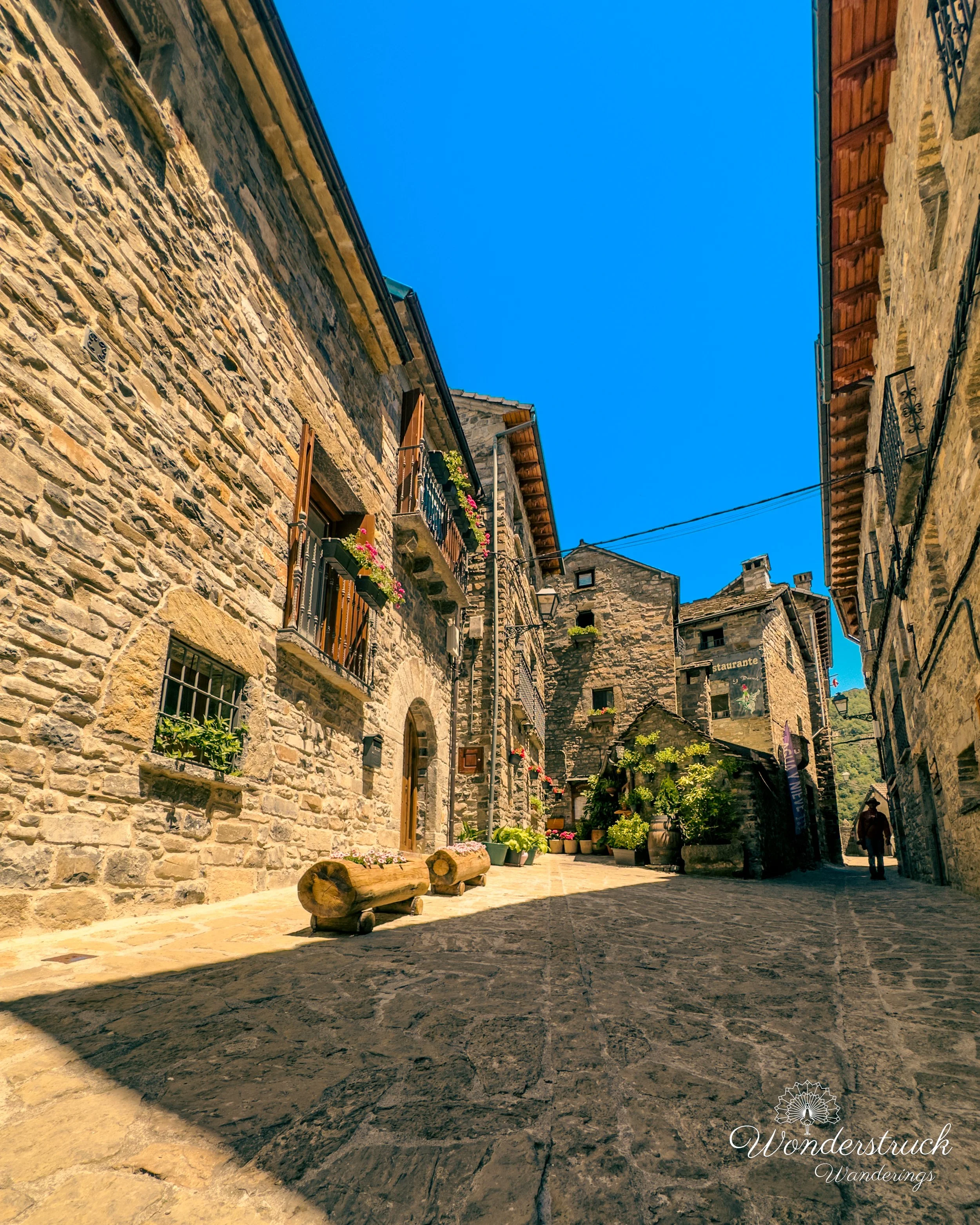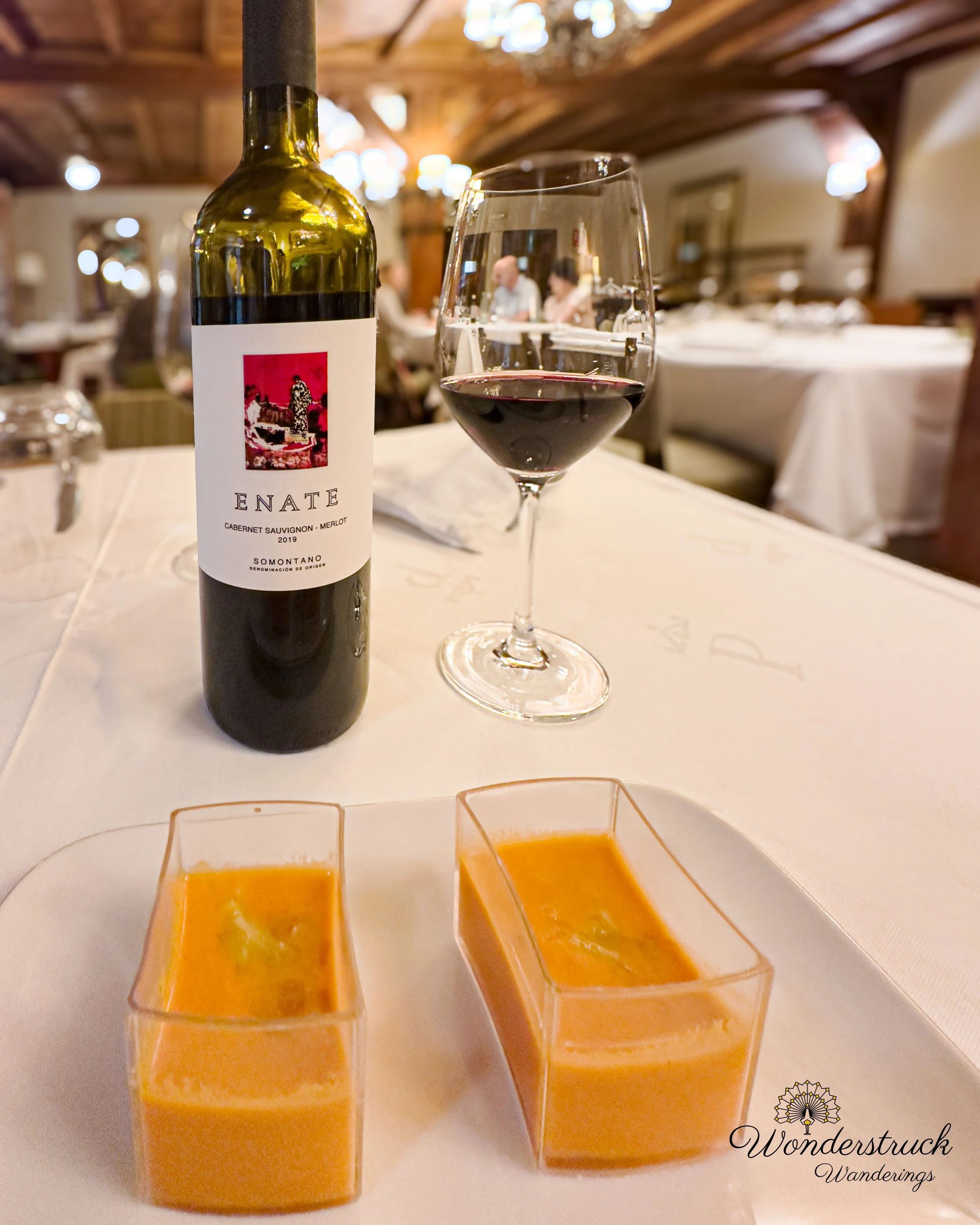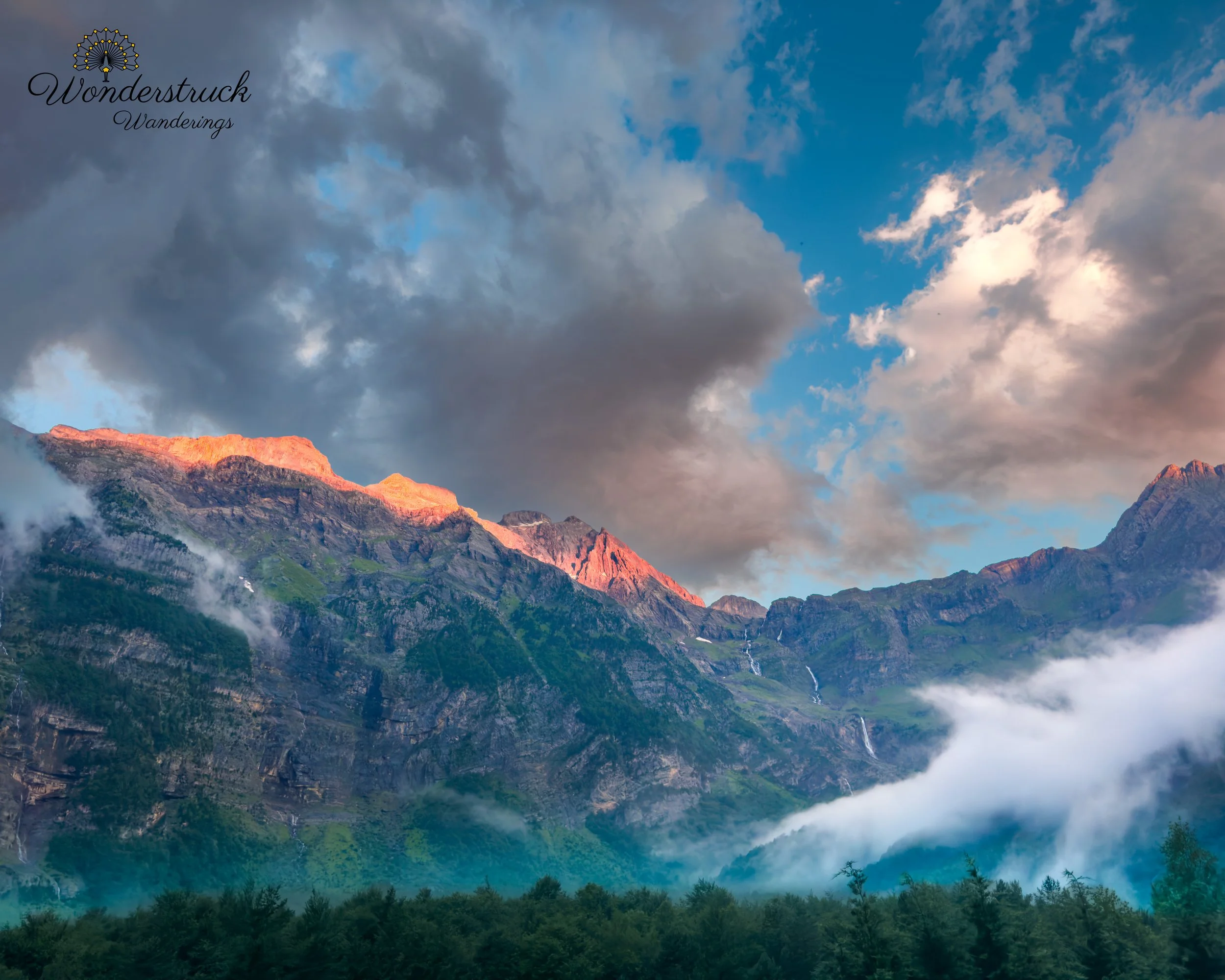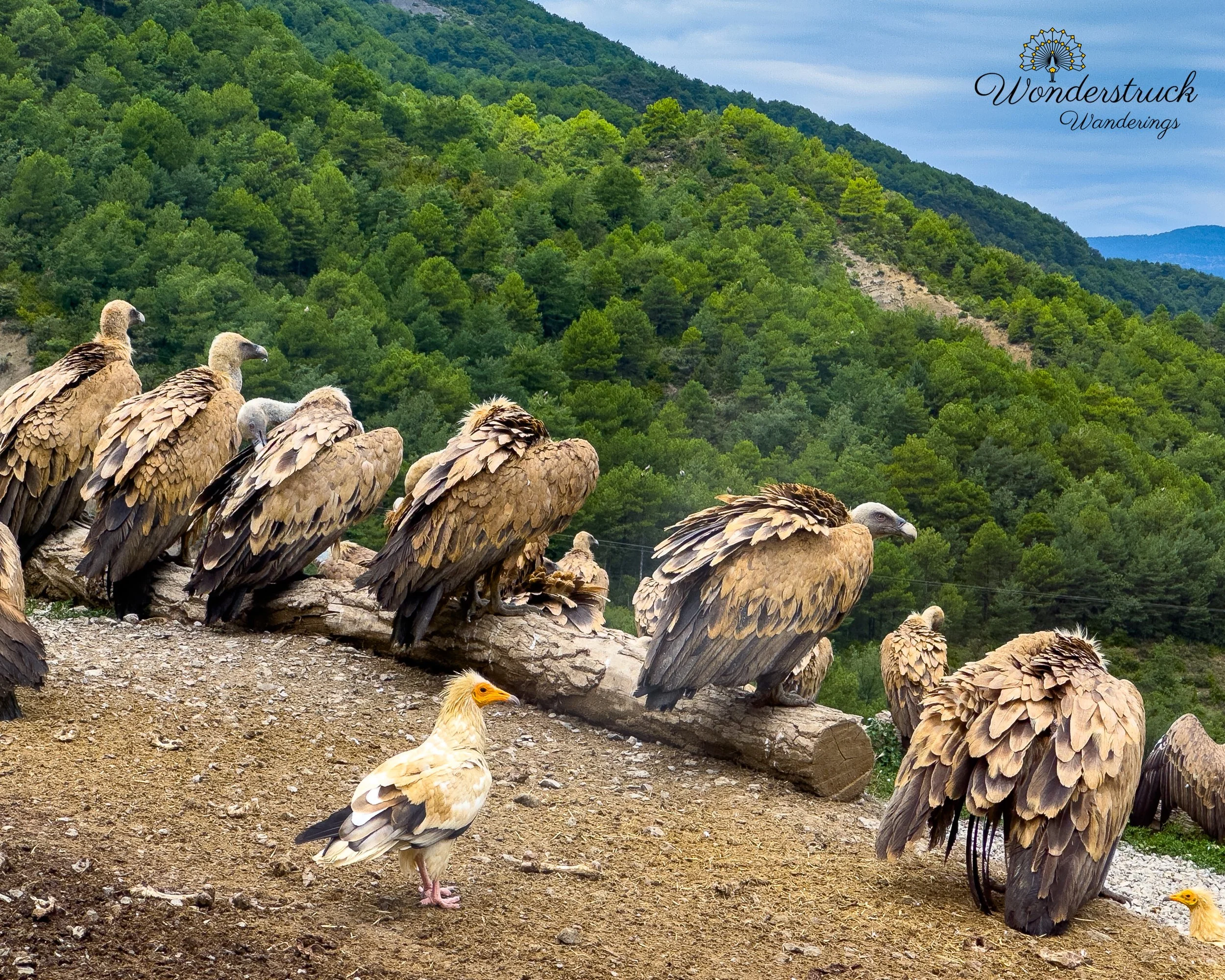Road Trip in Central & Northern Spain; a 11 Day Itinerary
When contemplating a trip to Spain the sun-kissed southern coastline, the captivating allure of Barcelona, or the bustling capital of Madrid, take precedence on travelers' must-visit lists. When our friends invited us for a summer wedding in a small town south of Madrid , we decide to plan a road trip northwards to the mountain and the rugged coast of Asturias, Cantabria, and the Basque Country. Before reaching there our road trip took us through the Lands of “Don Quixote” , the sunny vineyards of Ribera del Duero and the Historic cities in Burgos and ending in the amazing Pyrenees on the French border with a rare sight of a unique bird. Read more on tour diary
Day1 - Charming Towns around Madrid
-
The Parador de Chinchón is a beautiful hotel located in a corner of the famous main square in a former 17th-century convent, which gives it a unique historical charm. It offers the opportunity to enjoy the beauty of this medieval town while staying in a hotel with large gardens and a spectacular glazed cloister that contains an exclusive collection of religious art.
-
Lunch-Café de La Iberia at the Plaza Mayor de Chichon
Dinner- restaurant at Parador de Chinchon ( we had a wedding dinner so we did not eat here, but have heard good things about it)
-
The Palace and Gardens of Aranjuez
Medieval town of Chichon
Alcala de Henares (we had to skip it as we had a wedding to attend)
-
All the towns mentioned are within 1 hr. of Madrid and of each other. With a rental car al three can be covered in1 day, but better to spend the night in Chinchon as the Plaza comes alive at night time
Our journey began with a landing in Madrid at 8 am on an overnight Iberia flight from Chicago, which is great as it gives us the whole day to explore. The hotel check-in’s are generally after 3pm which prompted exploration of small towns around Madrid. There are quite a few wonderful towns to choose from, but we picked Aranjuez and Chinchon due to their proximity to our friend's wedding venue
Aranjuez, famous for its palace and gardens, offered ornate interiors and expansive grounds, served as the springtime residence for centuries of spanish royals. After a brief visit to the museums (fee area) and snacks to tide over our morning munchies, we roamed the exquisite gardens inspired by Versailles, featuring woodlands, marble fountains, and diverse flora.
By 1 pm, hunger and the hot sun led us to Chinchon, a medieval town where we enjoyed a satisfying meal of jamon croquettes, succulent lamb, morcilla, and local red wine. Afterwards, we headed to the Palacete hotel where our friend's wedding reception was to be held.
The wedding, held in a nearby old church, unfolded into a 12-hour celebration. Commencing with an array of tapas, jamon, and Spanish delicacies, followed by a lavish five-course sit-down dinner accompanied by wine and beer, the festivities stretched past midnight. Jetlagged, we retired around 3 am, while the bride, groom and a few of the spirited guests continued revealing until sunrise. Read more on daily diaries
Day2 -The land of Don Quixote and Tablas de Daimiel
-
The Parador de Almagro occupies the old Convent of Santa Catalina, a 17th century Franciscan convent with a combination of Renaissance and Baroque styles of architecture. The building is a huge complex with 14 enclosed patios and numerous galleries and passageways decorated with traditional artwork.
-
Lunch- La Musas, a Michellein star restaurant in campo de Criptana
Dinner- restaurant at Parador de Almagro
-
Campo de Criptana, a 13th century town with numerous legendary windmills made famous by the exploits of “Don Quixote” an epic novel by Miguel de Cervantes
Tablas de Daimiel, a wetland National Park on the La Mancha plain’s.
Almagro, a town established in the 12th century and the capital city of Spanish theater in the Siglo de Oro (Spanish Golden Age).
-
Almagro is 2-1/4 hrs from Madrid , but a detour through windmills of Campo de Criptana makes the total drivetime to 3 hrs. Tablas de Daimiel National park is 30 mins from Almagro.
The next day, at 11am, we got ready, had breakfast, and bid farewell to our friends and started our journey. Our upcoming adventure was mostly in northern Spain, but before heading north we went south to spend the night at Paradores de Almagro, a charming hotel near Parque Nacional Tablas De Daimiel, housed in the historic Convent of Santa Catalina from the 17th century south of Madrid.
Another reason for taking this detour the region of La Mancha, famous for Don Quixote that we all have read about in the famous epic novel by Miguel de Cervantes. We stopped at the iconic windmills of Campo de Criptana, discussing themes from the novel and doing some souvenir shopping in the nearby shops. We indulged in tapas, wine, and cerveza at a local Michelin-starred restaurant called La Musa.
Once we reached our beautiful hotel we took a refreshing break with an included local wine and then went bird watching at Parque Nacional Tablas Daimiel. The very hot and murky day made bird life scarce but we enjoyed the sunset and a chance encounter with a fox. A very late dinner ( normal hours for Spanish) of local cuisine and wine marked the end of the day as we retired to bed, tired but content. Read more on daily diaries
Day3 -Ribera del Duero Winery and Lerma
-
Parador de Lerma , a 17th century Ducal Palace of Lerma stands, built on top of a medieval castle with stone walls, numerous iron balconies and four towers with slate roofs.It has an amazing facade including a roman cloister adorned with gigantic tapestries. “A royal wedding was held here, a queen gave birth, and Napoleon Bonaparte slept here”
-
Breakfast - Restaurante Cafetería Teo, an outside cafeteria with a view of the Plaza mayor in Almagro
Lunch- Asador Casa Antón in Lerma or wine tasting/ tapas at the vineyards in Ribera del Duero region
Dinner- restaurant at Parador de Lerma
-
Lerma, a 17th century medieval castle town with one of the largest Plaza Mayor in spain.The town has numerous ornate convents and monasteries such as the Collegiate Church of San Pedro and the Convent of San Blas.
Ribera del Duero, One of Spain’s top Denominación de Origen (DO) red wines–producing regions in the center of Castilla y León, flanking the riverbanks of the Duero.
Peñafiel castle- A unique german gothic style castle on a hilltop that can be seen from far. It is 210 meters long but only 33 meters wide.( closed on Monday’s)
-
Lerma is 2-1/4 hrs north of Madrid , but a detour through the wine regions of Ribera del Duero makes it to 3 hrs. From Almagro it's 4 and 5 hrs respectively. Burgos is 30 mins north of Lerma
We overslept, missing morning bird watching at Tablas Daimiel due to jet lag and Spain's late meal times. We really wanted to visit the Corral de comedias de Almagro , a still active open-air 17th century theater specific to Spain, but unfortunately the museums were closed on Mondays. Undeterred, we had breakfast at Plaza Mayor, enjoying toast with jamon and observing locals starting their day.
After exploring the Parador's historic corridors, we drove to Lerma via Peñafiel. Peñafiel Castle was closed as well due to it being Monday, so we visited Tinto Pesquera winery instead, indulging in a tasting and purchasing Tempranillo wines. There are a lot of other wineries that can be explored here and we discussed a future dedicated spanish wine trip.
By 5:30 pm, we were en route to our second Parador hotel in Lerma, one of Spain's largest well-preserved medieval towns. After admiring the 17th-century palace's facade, we checked in and enjoyed local cheeses and vermouth in the central courtyard.
Opting out of a trip to Burgos due to cloudy weather, we wandered the neighborhood, cherishing each other's company and enjoying the beautiful architecture glow in the setting sun. Monday closures also meant our first choice of an Asador Casa Anton, we dined at the Parador's renowned restaurant, savoring local cuisine and wine before calling it a day. Read more on daily diaries
Day4 -Burgos and Picos de Europa National Park
-
Parador de Fuente De, is a modern mountain shelter located next to the famous Funet de cable car which takes you up the mountain for easy access to alpine hiking on trails 300 meters above.
-
Breakfast - any cafe in the Plaza Mayor or Plaza Rey San Fernando (near the cathedral) in Burgos
Lunch- Casa Ojeda restaurant, a centuries old Castilian establishment—known for cochinillo (suckling pig and lamb) served straight from the 200-year-old wood oven.
Dinner- Local cheese, sausage, bread and cider/beer from artisanal shops in and around Potes( after a full lunch we did not have appetite for a full sit down dinner)
-
Burgos, a 9th century medieval city with the famous Burgos Cathedral and numerous churches,palaces,monasteries as well as a historic castle on the hilltop overlooking the city. The Camino de Santiago, a network of christian pilgrimage, runs through Burgos.
Drive to the Picos- The drive begins with criss-crossing the Camino de Santiago in the hilly region of the state of Castile and Leon with numerous churches in small villages along the roadside ,before climbing up into the alpine villages located on the slopes of the mountains.
Potes- the touristy and bustling mountain town located at the confluence of four valleys, alongside the River Deva, which originates from the Picos
-
Fuente de is located in the Picos de Europa National Park and is 3-½ hrs. northwest of Lerma with a detour through Burgos. Burgos is 30 mins north of Lerma and 2-¾ hrs. north of Madrid.
That morning, we woke early to witness the sunrise from our balcony overlooking Lerma's Plaza Mayor. Blessed with two balconies, we watched the sun illuminate the sandstone buildings and rolling hills without stepping outside. Exploring Lerma's empty streets, we admired its architecture until the town came to life. After returning to our room and checking out, we drove to Burgos, enjoying breakfast at a local bakery where we discovered a newfound love for milk and sugar in our coffee.
In Burgos, we explored the magnificent cathedral, marveling at its Gothic architecture and stunning interiors for hours. A coffee break led us to discover the local specialty, morcilla, which we eagerly indulged in. Despite the closure of other attractions, we hiked to Burgos Castle, enjoying views of the cathedral and discovering unique wall murals along the way. A late lunch at Casa Ojeda treated us to delicious Castilian cuisine, including suckling lamb and hand-cut jamon iberico. Continuing our journey to Fuente De, nestled in the Picos de Europa mountains, we marveled at the changing landscape and checked into our mountain shelter. Despite skipping dinner, we relished the tranquility of the mountains, anticipating the adventures that awaited us in the days ahead. Read more on daily diaries
Day5 -Exploring Picos de Europa
-
Parador de Cangas de Onis, one of the oldest Benedictine monasteries ( 8th century) on the banks of the river Sella, surrounded by the spectacular Picos de Europa. closely linked to the lineage of the first kings of Asturias.A National Monument since 1907 it conserves the 1200 years of history t with the nearby 8th c. Romanesque church
-
Breakfast - Cable - Teleférico Fuente Dé, the menu is basic but they have coffee and the view from the top of the mountain is to die for.
Lunch- Local cheese(Picón - Bejes, or Cabrales ), game sausage (wild boar or venison), bread and cider/beer from artisanal shops in and around Cantabria ( after a full lunch we did not have appetite for a full sit down dinner)
Dinner- restaurant at Parador de Cangas de Onís
-
Mogrovejo, a picturesque small village on the foothills of the Picos. You can only drive to the first village and then walk around to visit all the other small villages clustered around the mountain side
Cillorigo de Liébana,a cluster of different picturesque small villages like, Liébana, Bejes,Cabañes etc
Drive to Cangas de Onis,a town on the westside of the Picos- using the southern route through picturesque Riaño with beautiful vistas and viewpoints at every corner. A favored route for the bikers ( also because we were going to do the northern drive the next day)
-
Cangas de Onis is 1-1/2 hrs. from Potes using the Northern route , but a southern detour through the Riaño makes it 2-1 ⁄ 2 hrs. drive time. The numerous viewpoints and beautiful winding road makes it a 5-6 hr. drives
We woke up early to the invigorating scent of mountain air in the Picos de Europa and rushed outside to catch the sunrise from the hotel's backyard. After taking in the breathtaking view, we headed to the cable car entrance for our pre-booked ride to the top. The ascent to El Cable Viewpoint offered mesmerizing views of Liébana, and we spent hours exploring the trails and soaking in the scenery. Though we couldn't hike down due to time constraints, we savored the beauty of the surrounding landscape.
A quick stop for local vermouth preceded our descent back to the hotel. We then embarked on a scenic drive to Cangas de Onis, passing through picturesque towns and stopping at Bejes village to sample traditional Bejes Picon cheese. Our impromptu picnic with cheese, sausage, and cider offered a delightful break amidst stunning views. Continuing our journey, we stopped at Mogrovejo village and various viewpoints before reaching Parador de Cangas de Onis. Though we couldn't secure a room with a view, we enjoyed a cozy stay in this historic monastery-turned-hotel, indulging in a typical Asturian dinner accompanied by cider. Read more on daily diaries
Day6 -Exploring Asturias and Cantabria
-
Parador de Santillana Gil Blas,a beautiful 17th century nobleman’s Baroque townhouse,located at the lower end of a plaza in the heart of Santillana del Mar, a town declared as a National Monument. Characterized by the use of stone masonry in the façade, cast iron balconies, wooden floors and large rooms, some of which have a fireplace, makes this one of the best Parador.
-
Breakfast - Cafe at Cangas de Onis
Lunch- Local cheese(Gamonéu del Valle, or Cabrales ), game sausage (wild boar or venison), bread and cider/beer from artisanal shops in and around Asturias ( after a full lunch we did not have appetite for a full sit down dinner)
Dinner- restaurant at Parador de Santillana Gil Blas
-
Cangas de Onis, the beautiful and quiet town on the banks of river Sella with the spectacular backdrop of Picos de Europa has numerous things to explore , a roman bridge and the Hermitage of Santa Cruz being a few.The monastery of San Pedro de Villanueva 8th c., and the different corridors and salons of the Parador de Cangas de Onis can keep you busy for hours as well.
Covadonga, this historic city is located in the mountain of Picos de Europa, and is famous for the jaw dropping beauty of the Basílica de Santa María la Real de Covadonga and Our Lady of Covadonga, in a nearby cave. It is also a historic site where the spanish cristian won their first battle in the 700’s
Covadonga Lakes, two glacial lakes located in the Picos de Europa range and are the original center of the Picos de Europa National Park. ( we missed them as we did not wake up early enough)
Bulnes,a lost and one of the most photographed villages in the Picos, which was one of the last without road access, but now has a funicular to take you up in 10 mins. The timing of the Funicular needs some planning as you will be stranded or will have to walk down hill for 2-3hrs to get back
-
Santillana del Mar is 1-1/4 hrs. from Cangas De Onis using the coastal route , but a detour along the border of the Picos National Park makes it 2 hrs. drive time. The detour to Covadonga and Bulnes adds 1 hr. each respectively. You need at least 2-3 hrs. for Bulnes as the funicular is every 30 mins.
Another late start caused us to miss our planned trip to Covadonga lakes for sunrise, leaving us disappointed. However, we embraced the rainy morning with a leisurely breakfast at the hotel's cafe. Then, we explored the well-preserved monastery of San Pedro de Villanueva, dating back to the 8th century, marveling at its historic chapels and carvings.
Next, we visited Covadonga basilica & sanctuary and The Santa Cueva, shrouded in clouds and rain, creating a picturesque scene. Despite heavy rain, we drove to the villages of Dumes and Gamoneu in search of blue cheese, but all cheese makers were closed. Undeterred, we enjoyed drinks at a local cafe before heading to Santillana del Mar, making a detour to the Bulnes funicular. Due to time constraints and weather, we continued driving to Cabrales, where we finally found cheese stores open. Delighted, we sampled and purchased cheeses before heading to Parador de Santilana Gil Blas for the night. Our stay in the historically rich town of Santillana del Mar was complemented by a splendid suite with a balcony overlooking the main plaza. After drinks and a delicious Asturian meal, we retired to our rooms, enjoying the rain from the balcony before calling it a night. Read more on daily diaries
Day7 -Exploring Spanish Northern Coast
-
Gaztelu Begi, a cozy Stone farmhouse inn on a hillside ,overlooking the San Juan de Gaztelugatxe chapel along the Atlantic Ocean, made famous by Game of Thrones.
-
Breakfast - Any Pincho bar that catches you fancy in the main plaza of Santillana Del Mar
Lunch- Pincho ( a typical snack from Basque region) Bar crawl in Santander. To name a few places
Vermuteria Solorzano ; Vermutería De Vicio ; Casa Lita ; Bodega Cigaleña ; Arrabal 11
Dinner- Leftover local cheese, game sausage (wild boar or venison), bread and cider/beer (after that sumptuous bar crawl we did not have appetite for a full sit down dinner)
-
Santillana del Mar,a historic town situated in Cantabria, The town's namesake Santa Juliana’s remains are kept in the Colegiata, a Romanesque church and former Benedictine monastery. The picturesque cobblestone village with preserved old buildings and lots of shops and restaurants.
Cave of Altamira,a UNESCO World Heritage Site with 36000 year old cave paintings. The original caves are closed for preservation but you can visit the replica
Northern Coast ,the serene and lush green with jagged coastline with the Picos mountains in the backdrop. It needs a separate trip altogether to enjoy its marvel from end to end
Santander, the capital city of Cantabria, with numerous plazas, palace’s, churches ,and lots of beautiful beaches and a cathedral.The city is believed to have roman origins and has been a famous port city for centuries. Also famous for its bustling gastronomic scene.
Bilbao,the largest city in the Basque country with lots of historic building and museums( needs at least an extra day to explore, we skipped it as cities are not our thing)
-
Gaztelugatxe is 2-1/4 hrs. from Santillana del Mar with a stop at Santander. Driving along the coast through small villages will easily add 1-2 hrs. extra drive time, depending on the route. Bilbao will add 50 mins. extra to the drive time.
One of the eagerly anticipated highlights of our trip to northern Spain was capturing the stunning seascapes along the coastline. Setting out before sunrise, we aimed for the Uro del Manzano vista point to photograph the dragon fins during low tide. Despite the gloomy weather and slight drizzle, we navigated through Google maps only to find ourselves at a dead end. Undeterred, we parked and trekked through meadows until we found the desired scene. R promptly set up his tripod, capturing the mesmerizing fins against the moody backdrop. However, the rain soon returned, cutting our shoot short. Unsure of the weather's intentions, we opted to head back to the hotel, hoping for better conditions.
Fortunately, the rain cleared, revealing a beautiful day. We explored the Collegiate Church and the village of Santillana del Mar, indulging in local shopping and cuisine. Our journey then took us to Gaztelugatxe, known for its hermitage and stunning views. En route, we stopped in Santander for a pincho bar crawl, enjoying local delicacies and conversations with locals. Finally, we reached Gaztelugatxe and scouted the area for the next day's adventures, culminating in a serene sunset from a viewpoint. Back at our accommodation, we relished in chorizo and cheese, reflecting on a truly memorable day. Read more on daily diaries
Day8 -Exploring Basque Country
-
Parador de Hondarribia,is a 10th-century Charles V’s castle just across the French border constructed for military defense with very thick and heigh stone walls.One of the Big dining halls is decorated with tapestries designed by Rubens on the theme of the History of Achilles, an absolutely reassure to see. Little tricky to reach the hotel since it is located in the old quarters. Also the only parador we have visited so far without a restaurant.
-
Breakfast - Knick Knacks and Coffee from the bar at Gaztelu Begi
Lunch- Pincho’s and Cider at Gaztelu Begi,as we were stuck there for hours due to Tour de France ( who knew it has a circuit in Spain too)
Lurka craft chocolate in San Sebastian for Coffee/Hot Chocolate and cake and chocolate
Dinner- Gastroteka Danontzat in Hondarribia historic quarter
-
San Juan de Gaztelugatxe, an island with a chapel on top dedicated to John the Baptist, located just off the shore in the Bay of Biscay. The island is connected to the mainland by a man-made stone bridge, which transitions into a narrow spiraling pathway 241 steps recognized as one of the world’s grandest staircases.San Juan de Gaztelugatxe as the island fortress of “Dragonstone” from season 7 of Game of Thrones.
San Sebastián, is a laid back city located in the north of the Basque Country, on the south-eastern coast of the Bay of Biscay. It has three beaches surrounded by hilly areas, from where you can get some amazing views of the bay and the city. The city traces its history back to the roman ages and few not to be missed are Basilica of Santa María del Coro,Church of San Vicente,Buen Pastor Cathedral and Miramar Royal Palace. The gastronomic journey of Pincho and cider/wine bar crawl is not to be missed, but needs a full day to do it safely.
-
Hondarribia is 2 hrs from Gaztelugatxe and goes through San Sebastian ( adds only 20 mins of drive time,parking and walking around is a whole different thing). If you have time you can take the drive along the coast through Urdaibai Biosphere Reserve, which is very scenic and only adds 1 hr.
Waking up to persistent drizzle, our sunrise plans became futile, so we indulged in a few extra hours of sleep before commencing our hike to Gaztelugatxe church around 9 am. Despite the cloudy skies and occasional rain, the ascent offered spectacular views of the bay, albeit with a temporary pause under the church roof due to heavy rain. Once the downpour subsided, our descent back to Gaztelu Begi revealed stunning transformations in the weather, from soggy gray to breathtaking sunshine, enhancing the beauty of the surroundings.
Excited for a day in San Sebastian and a stay at the Parador de Hondarribia, our plans took an unexpected turn when we encountered road closures for the Tour de France, trapping us for hours. Frustration mounted as detours and closures thwarted our attempts to visit tokaji tastings and explore San Sebastian. However, a silver lining emerged as we connected with Pablo of Lurka craft chocolate, indulging in delightful treats and conversation before venturing to Gastroteka Danontzat, albeit with difficulty securing a table.
Navigating through construction and cobblestone streets, we finally arrived at Parador de Hondarribia, a historic castle with ties to Spanish royalty and rich cultural heritage. The persistent drizzle dampened hopes of watching the sunset over water, compounded by dining setbacks at local restaurants. Despite initial rejections, persistence paid off as Danontzat accommodated us, treating us to a culinary journey of innovative Basque cuisine.
With our hearts and stomachs full, we retired to our room, grateful for the day's culinary adventures amidst the backdrop of ocean whispers. Read more on daily diaries
Day9 -Exploring Ordesa National Park
-
Hotel Palazio in Nerin,is a mountain-style décor family run hotel in the heart of the Ordesa y Monte Perdido National Park. It offers breathtaking mountain views from its terrace and rooms. It is located right at the outskirts of a small village of Nerín and used frequently as a base to explore the canyons, glaciers and waterfalls. A must for a romantic couple getaway , especially if you can on a full moon night. Lots of places to stay in Broto and Torla as well.
-
Breakfast - Buffet breakfast at Parador de Hondarribia with a varied range of local products
Lunch- Picnic lunch in Ordesa National park ( Jamon Iberico , local cheese and tostadas)
Dinner- at Hotel Palazio in Nerin, simple local delicacies
-
Hondarribia,a historic town, is a leading tourist attraction on the Cantabrian coast. It's a pleasure to stroll along its cobblestone alleys in the historic quarter from Santa María Gate to San Nicolás Gate, exploring its medieval layout, numerous churches, houses with balconies and the remains of its fortification walls. Outside the historic quarter the fun is in hopping between different beaches and coastal towns ( even crossing into France) or going to the mountains. ( We missed most of it as it rained all morning ,which it does frequently, so have some extra time)
Pamplona , famous for running of the bulls or scenic drive though Navarra Pyrenees and Arbayun canyon in Sierra de Leyre mountains, along Salazar River (from Valle de Baztan to Valle de Roncal via Lumbier). We wanted to do the latter but heavy rain and fog kept us from taking that route.
Ordesa and Monte Perdido National Park (Ordesa valley) this park situated in the Aragonese Pyrenees has four main sections (Ordesa,Añisclo, Escuian, and Pineta) and can be seen either by hiking or by guided 4x4 tours.The Ordesa valley tours leaves from Torla or Broto and takes you up the mountain with amazing 360°views of the the Ordesa valley.You can also take a bus to the trailhead and do a day hike to cover the Ordesa valley view points. Anisclo canyon part can be accessed from Nerin (we only found out when we were there, the Hotel Palazio can arrange it for you).
-
Hondaribba to Broto is 3-¼ hrs. and passes through Pamplona. The scenic drive through Valle de Baztan to Valle de Roncal via Lumbier will make the drive time to 5 hrs.Torla is 20 mins from Broto. The 4x4 travel to the Ordesa viewpoints is 45 mins .
Our journey through northern Spain was marked by three days of unexpected discoveries amidst persistent rain. We began by exploring the maritime charm of Hondarribia before setting out towards Parque Nacional de Ordesa y Monte Perdido.Despite the weather, we embarked on a scenic drive, catching glimpses of the majestic Pyrenees as the rain subsided. Arriving at Broto parking lot, we met our guide, Gema, for a captivating hike through Ordesa National Park. Over four hours, we enjoyed breathtaking vistas and encounters with local wildlife, including a rare sighting of a European hummingbird.
After the hike, we indulged in a simple snack of jamon iberico, cheese, and tostadas amidst the mountainous backdrop. Bid farewell to Gema, we continued to Nerin, a tranquil mountain town offering respite from urban life.
En route, we paused in Fanlo to witness the enchanting spectacle of the full moon rising over the Pyrenees. At Hotel Palazio Nerin, we were greeted with warm hospitality and panoramic mountain views.
Promising to return for a longer stay, we settled into our room, eager to explore the natural wonders of Nerin under the enchanting glow of the moon. As we drifted off to sleep, we discussed future adventures, excited by the prospect of further exploration amidst the stunning landscapes of northern Spain. Read more on daily diaries
Day10 -Exploring Ordesa and Monte Pedro National Park
-
Parador de Bielsa, a 1960’s building similar to a mountain shelter made of local stone and wood at the foot of the imposing Monte Perdido,located in the heart of the Pineta Valley. One of the best located hotels in the entire trip and majestic views from your room on either side if you get the right room.
-
Breakfast - Simple breakfast at Hotel Palazio in Nerin, with incredible views
Lunch- Bar Pizzeria El Taillon in Torla, as it was the only place that serves food between breakfast and Lunch
Dinner- restaurant at Parador de Bielsa serving local delicacies
-
Torla-Ordesa, is a beautiful Aragon village at the west end of the national park with breathtaking postcard views. It borders France but has no direct road connection to it.The glacial valley was carved by River Ara, after the confluence of the valleys of Bujaruelo and Ordesa and is the gateway to exploring the views and meadow of Ordesa. This is also famous for its adventure sports like canyoneering , Via ferrata and rafting apart from its amazing alpine hikes.
Scenic Drive from Torla to Bielsa via HU-631 ( only open in summertime) which takes you through the viewpoints of the Anisclo and Escuian and numerous small villages( Fanlo, Nerin and others) dotted on the mountainside.
Ordesa and Monte Perdido National Park (Bielsa Sector) ,the Pineta Valley is considered one of the most spectacular in the Pyrenees with lush forests of pines, firs, and beech under the imposing watch of Monte Perdido. Melt water from glacial ice forms the river Cinca and drops down the majestic mountain via huge and majestic waterfalls. The views from the top of the meadows in this area are one of the best.
-
Torla-Ordesa to Bielsa is 1-1/2 hrs. using the highway and the Parador de Bielsa is 20 mins. further. The village of Nerin is 45 mins. from Broto via HU-631. The scenic route from Torla to Parador de Bielsa takes around 3-½ hrs., but is totally worth it.
We kicked off our day in Nerin with a serene sunrise view from our room before venturing out for a leisurely stroll. Despite its tiny population, we encountered friendly locals, including a seasoned mountain guide who shared stories of the area. Eager to explore more, we drove to a nearby brewery, only to find it closed—an experience typical of small Spanish towns with limited operating hours.
Continuing our journey, we arrived at Torla, the gateway to Ordesa y Monte Perdido National Park, a picturesque Aragonian town teeming with charm. After a leisurely stroll through its cobblestone streets, we sought a bite to eat, settling for a small bite place serving local beers and fried chorizo, a departure from the culinary delights we'd enjoyed throughout our trip.
As the day heated up, we made our way to Bielsa, where we checked into Parador de Bielsa—a modern yet rustic retreat nestled in the Pineta Valley. Reuniting with our guide, Gema, we embarked on a scenic hike, encountering marmots and Egyptian vultures amidst stunning mountain vistas. Despite the cloud cover obscuring the sunset, we savored a delicious dinner at the hotel's restaurant, indulging in local delicacies like salmon tomato salad and pacharan liqueur.
Retiring to our room with expansive mountain views, we eagerly anticipated the promise of a spectacular sunrise to conclude our unforgettable journey through northern Spain. Read more on daily diaries
Day11 -Quebranta Huesos & drive back to Madrid
-
Iberia Flight
-
Breakfast - restaurant at Parador de Bielsa
Lunch- Pizza Cafe in the main Plaza of Ainsa
Dinner- leftover cheese and sausages in our overnight airport hotel
-
Pirineos Bird Center, in Aínsa is working tirelessly to get the one and only Bearded vulture ( also known as Lammergeier or Quebrantahuesos) back in the mountains of Spain where it almost went extinct. Thanks to their efforts they have established a population of 100 pairs in the Pyrenees and are trying to get them back in the Picos de Europa as well. They also maintain a hide with a feeder for observing and photographing vultures. The main location also has rescues of various owls, raptors and vultures native to that region.
Ainsa,a historic hilltop village , almost completely preserved walled city with a series of closely packed, uniform houses, a Romanesque Church of Santa Maria with a tower that dominates the landscape from far, which takes you back to the Middle Ages. The town was an important stronghold against the battle between the moors and the christians. It gets very crowded as it is a favorite stop for many tourists.
Zaragoza, a beautiful city by the Ebro river famous for cuisine, and landmarks such as the Basílica del Pilar, La Seo Cathedral and the Aljafería Palace. The city architecture is a mix between the baroque and islamic architecture from the Moors. ( we had to skip this part as the the Bearded vulture took a long time to show up and we spent almost 6 hrs waiting for it)
-
Parador de Bielsa to Madrid is 6-1/2 hrs. and passes through Ainsa and the outskirts of Zargoza.Ainsa is 50 mins and Zaragoza is 3 hrs from Parador de Bielsa.
This day marked the thrilling culmination of our journey, starting with a breathtaking sunrise view from our room in Nerin. We hurried to Ainsa, where we had an appointment with the Pyrenean Bird Center to observe vultures from a photographic hide. Though we arrived slightly late, our guide ensured we witnessed the feeding spectacle of griffon and Egyptian vultures, an awe-inspiring sight despite some initial disturbances.
As we patiently waited for the bearded vultures to appear, we were treated to a sudden hailstorm, followed by the heartwarming sight of the birds drying their wings after the rain. Eventually, our perseverance paid off when two bearded vultures arrived, filling us with sheer delight.
After spending the day in anticipation, we ventured to Ainsa, where we explored the Pyrenean Bird Center and enjoyed a satisfying meal at a local pizza place. With hearts full of memories, we embarked on the journey back to Madrid, spending the night at the airport Holiday Inn before catching our early morning flight. Despite the hustle of connecting flights in London, we cherished the final moments of our unforgettable Spanish adventure. Read more on daily diaries










